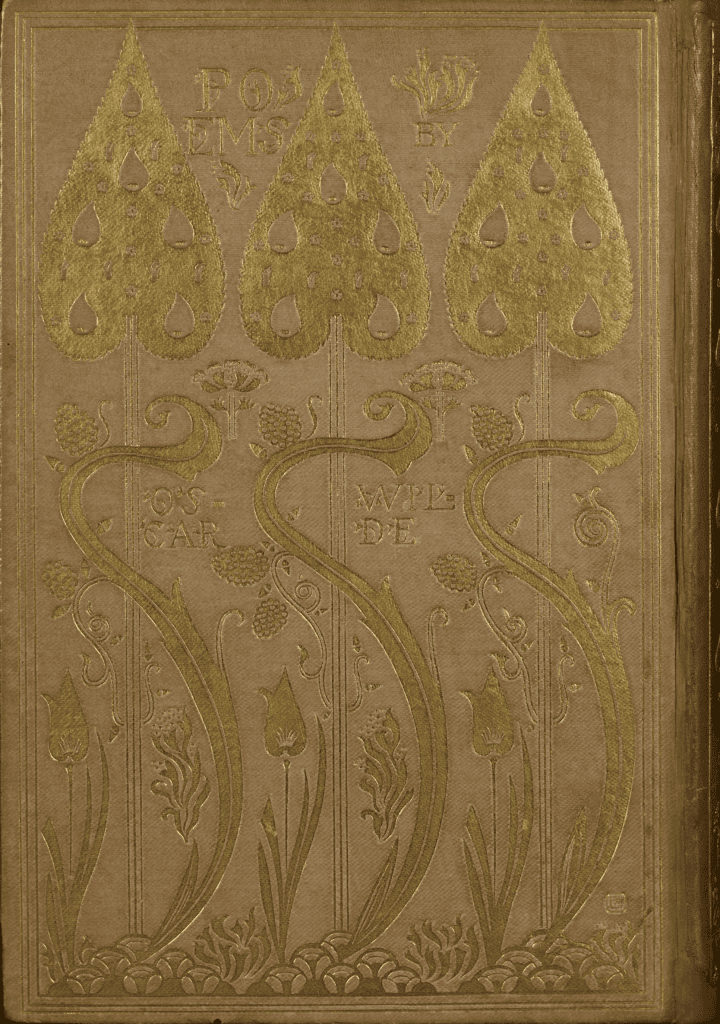


Wilde had begun publishing poetry in Dublin and Oxford, trying to interest W.E. Gladstone, among others, in acting as his patron. Punch satirised his 1881 collection, quipping “The poet is Wilde, but the poetry’s tame”. By now, Wilde was thoroughly associated with Aestheticism: an art movement praising “art for art’s sake”, rather than art as a didactic force. In 1881, W.S. Gilbert and Arthur Sullivan satirised Aestheticism – and Wilde – in their operetta Patience, which mocked the “greenery-yallery Grosvenor Gallery” ambience of the aesthetic world. Wilde foregrounded both green and yellow in his work, and had reviewed the Grosvenor Gallery exhibition of 1877 while still a (rusticated) Magdalen undergraduate. In 1882, Richard D’Oyly Carte, the producer of Patience, invited Wilde to tour America, hoping that exporting Britain’s new leading Aesthete would both publicise and explain Patience to its new American audience. Wilde rightly recognised his chance to achieve international fame.
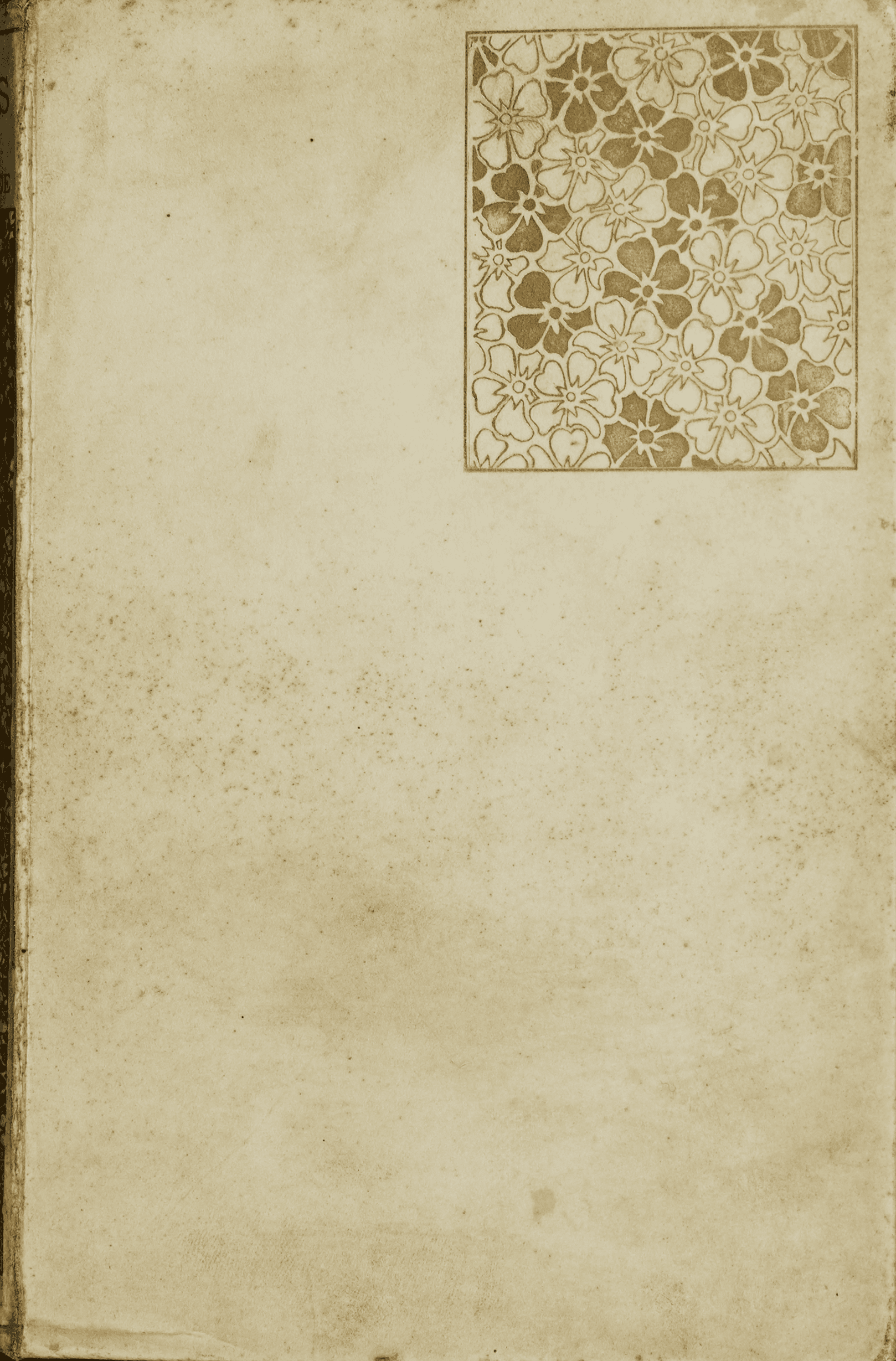

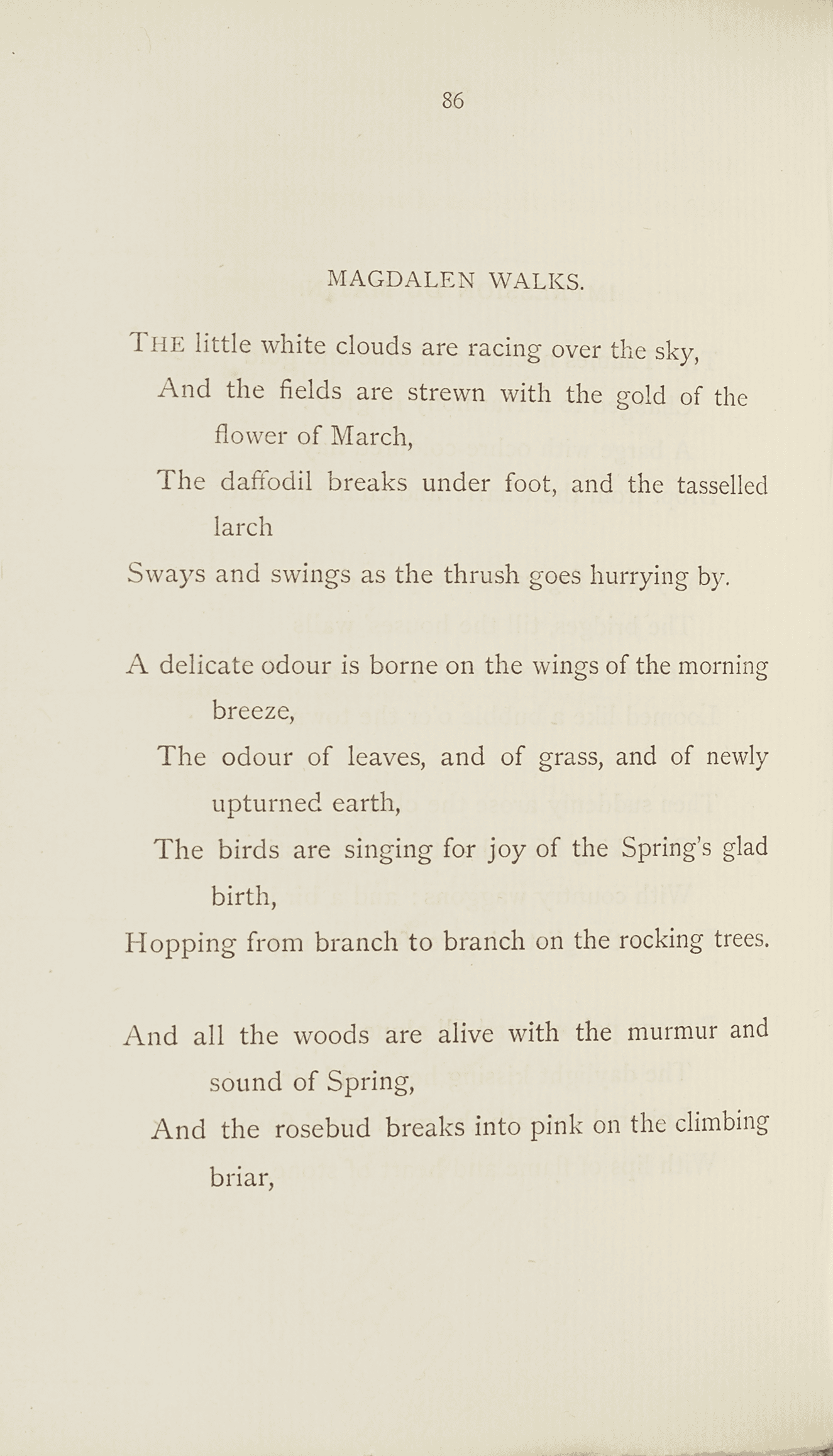
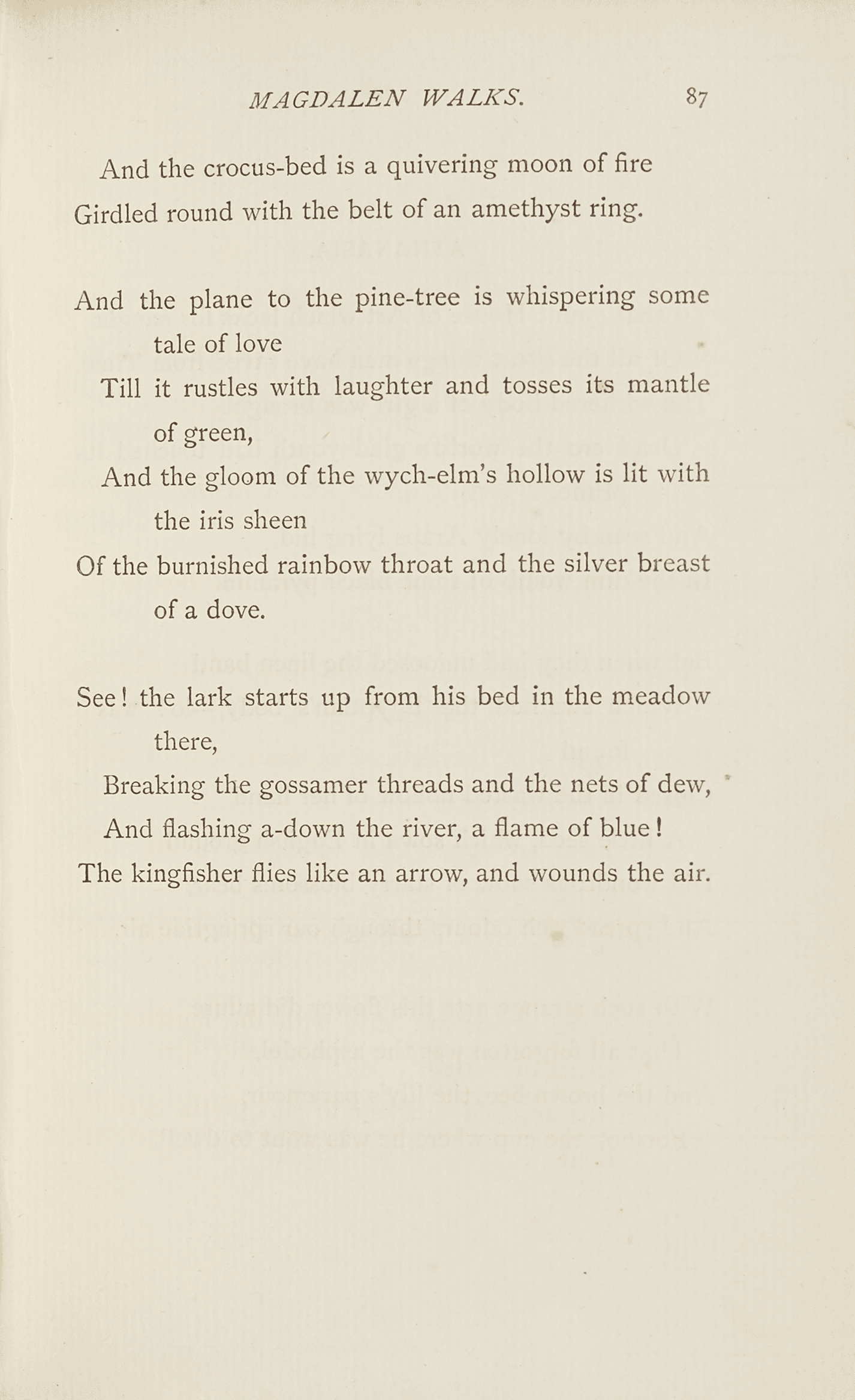
Poems (London: David Bogue, 1881)
Wilde’s first collection of poetry, Poems, was published by David Bogue (at Wilde’s instigation) in June 1881. Critics deemed it either derivative or unwholesome. Notoriously, the Oxford Union requested Wilde present a copy to their library, then changed their minds and rejected it. Some of the poetry had been written at or about Magdalen, including “Magdalen Walks”.
Magdalen College Library, Magd.Wilde-O. (POE) 1881
Purchased through the generosity of the sisters of George Scott (Magdalen 1953–6), in memory of their brother


Poems (London: Elkin Mathews & John Lane, 1892)
A sumptuous reissue of Bogue’s edition with designs by Charles Ricketts, including Art Nouveau floral illustrations in gilt on the covers.
Magdalen College Library, Magd.Wilde-O. (POE) 1892 Purchased through the generosity of Mrs Kay Wesley, in memory of her brother George Scott (Magdalen 1953–6)
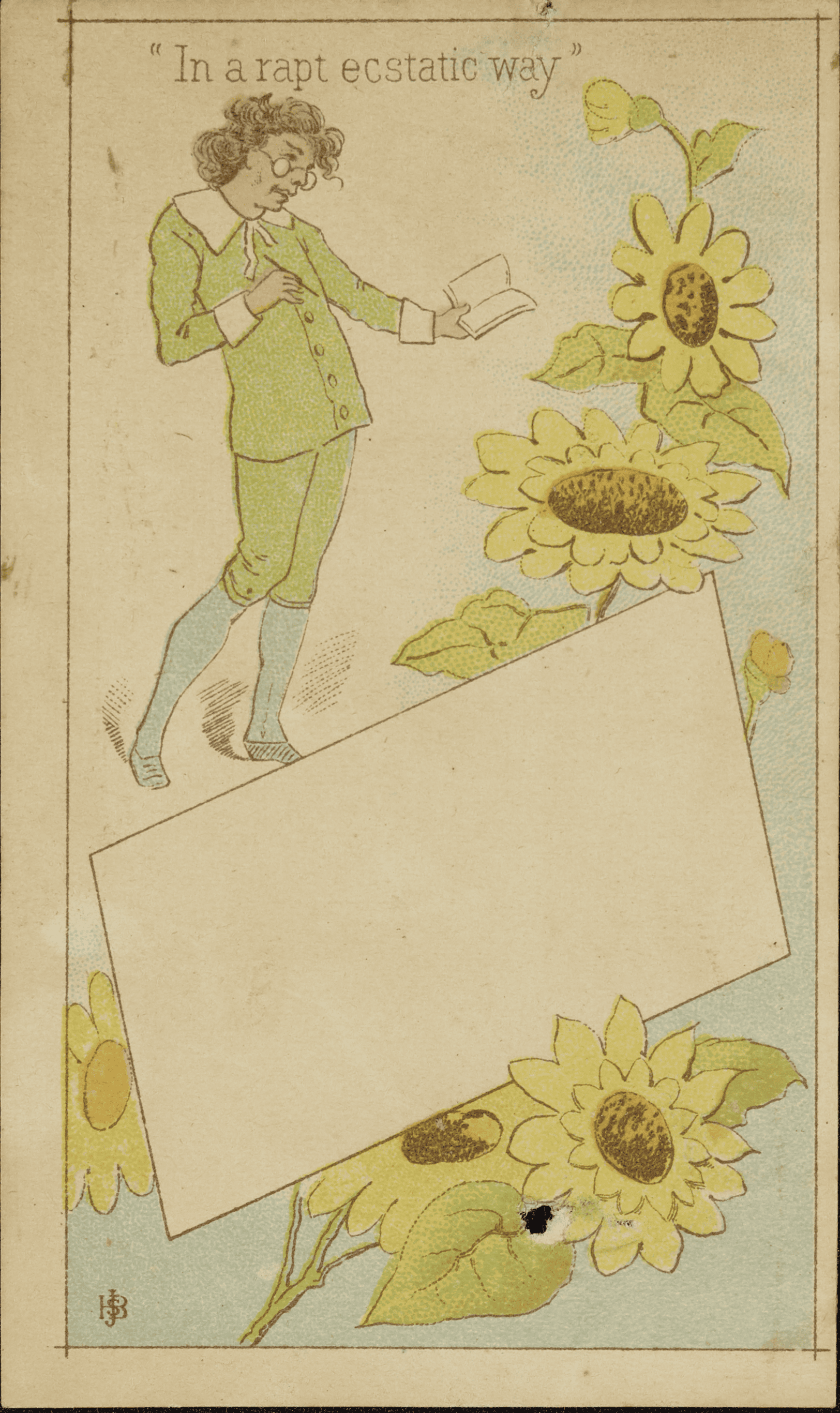
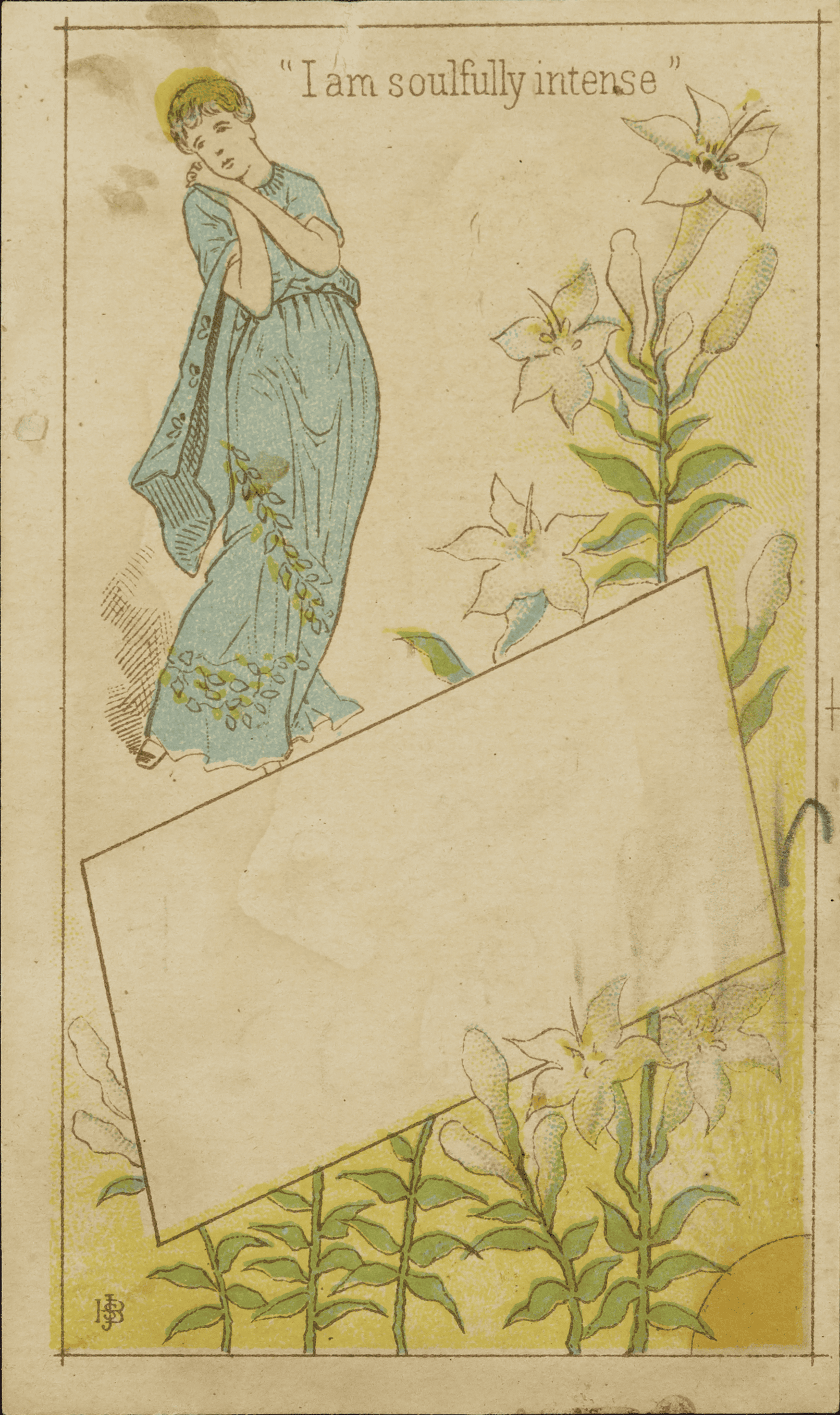
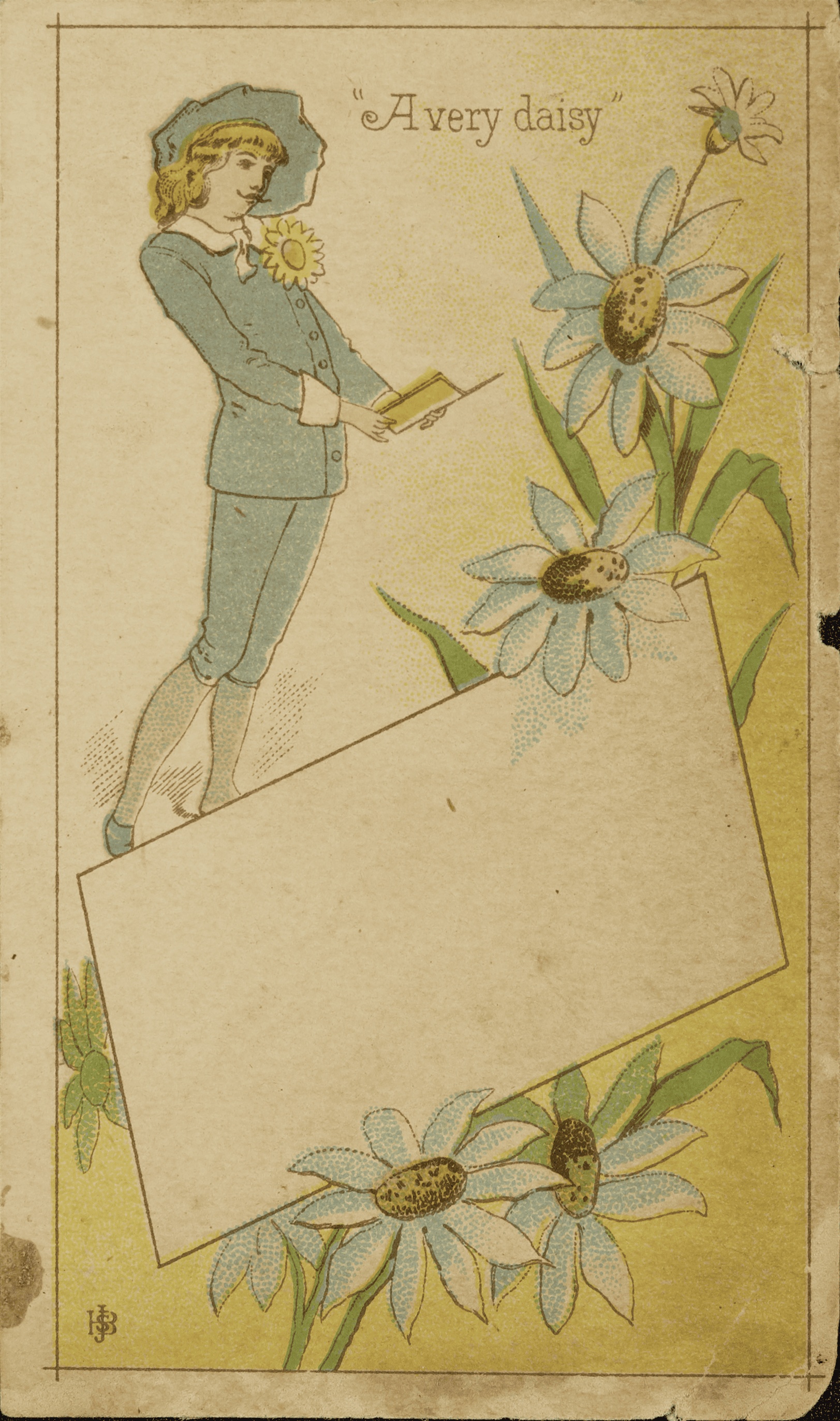
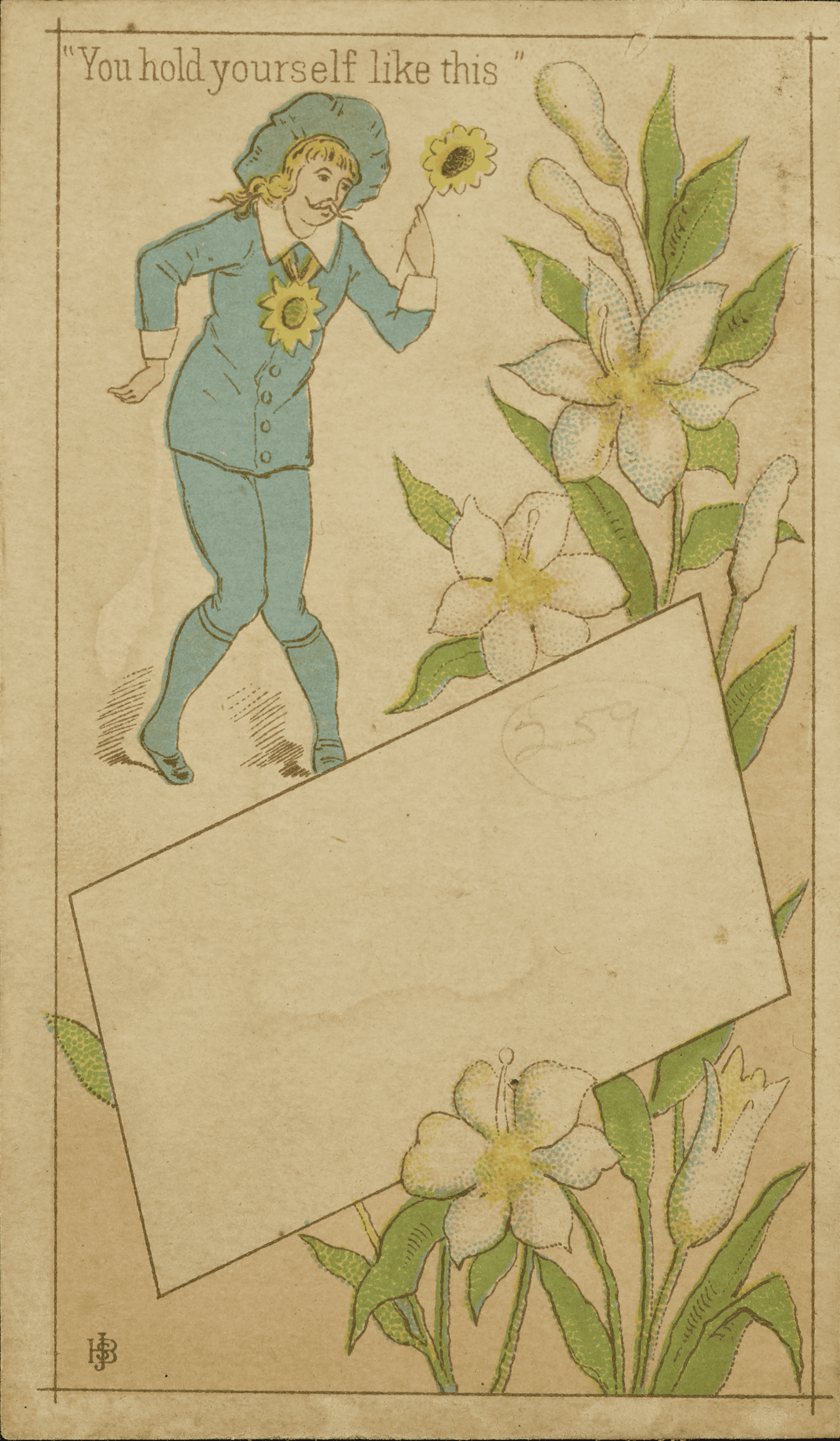

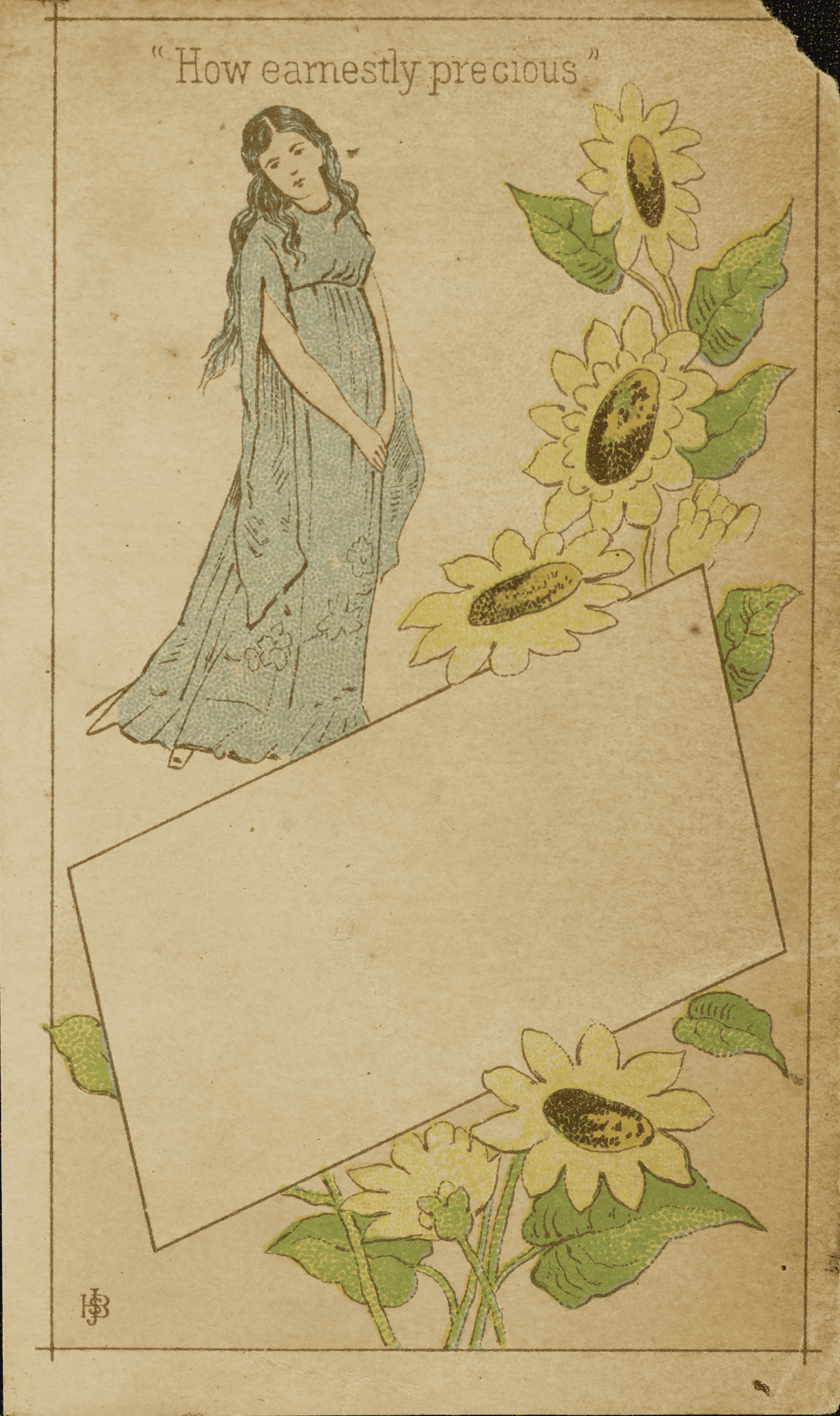
Card Advertising Stratton and Storm’s Cigars (1882)
Wilde began an American lecture tour in January 1882, lecturing on art and Aestheticism to every kind of audience: college students, millionaires, cowboys and coal miners. During the year, Wilde’s image and Aesthetic iconography were exploited to advertise all kinds of products. Stratton and Storm was a Manhattan cigar company famous for its hand-rolled cigars.
Magdalen College Library, Vernier Box 4
Purchased through the generosity of Justin Huscher (Rhodes Scholar 1978–80) and Hilarie Huscher
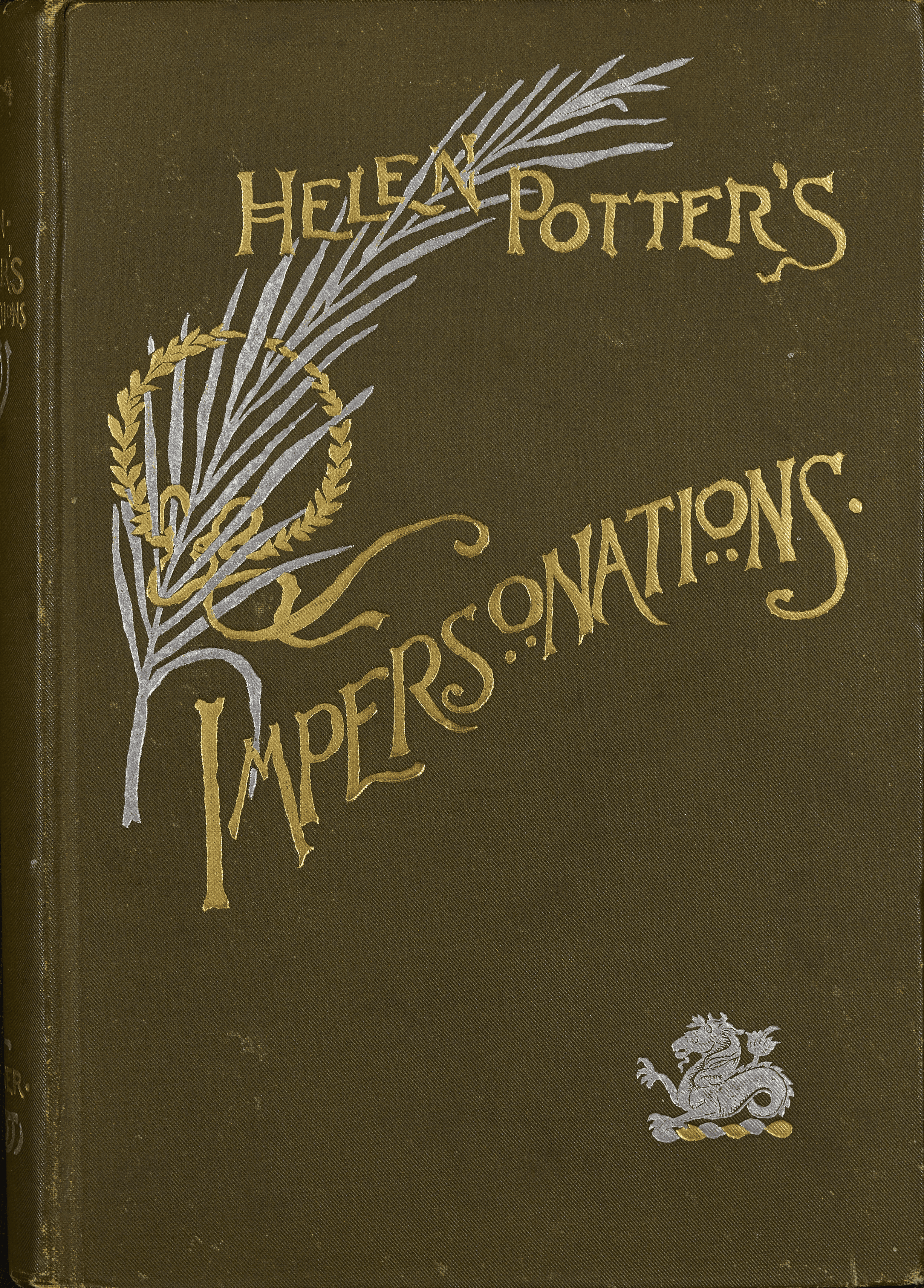
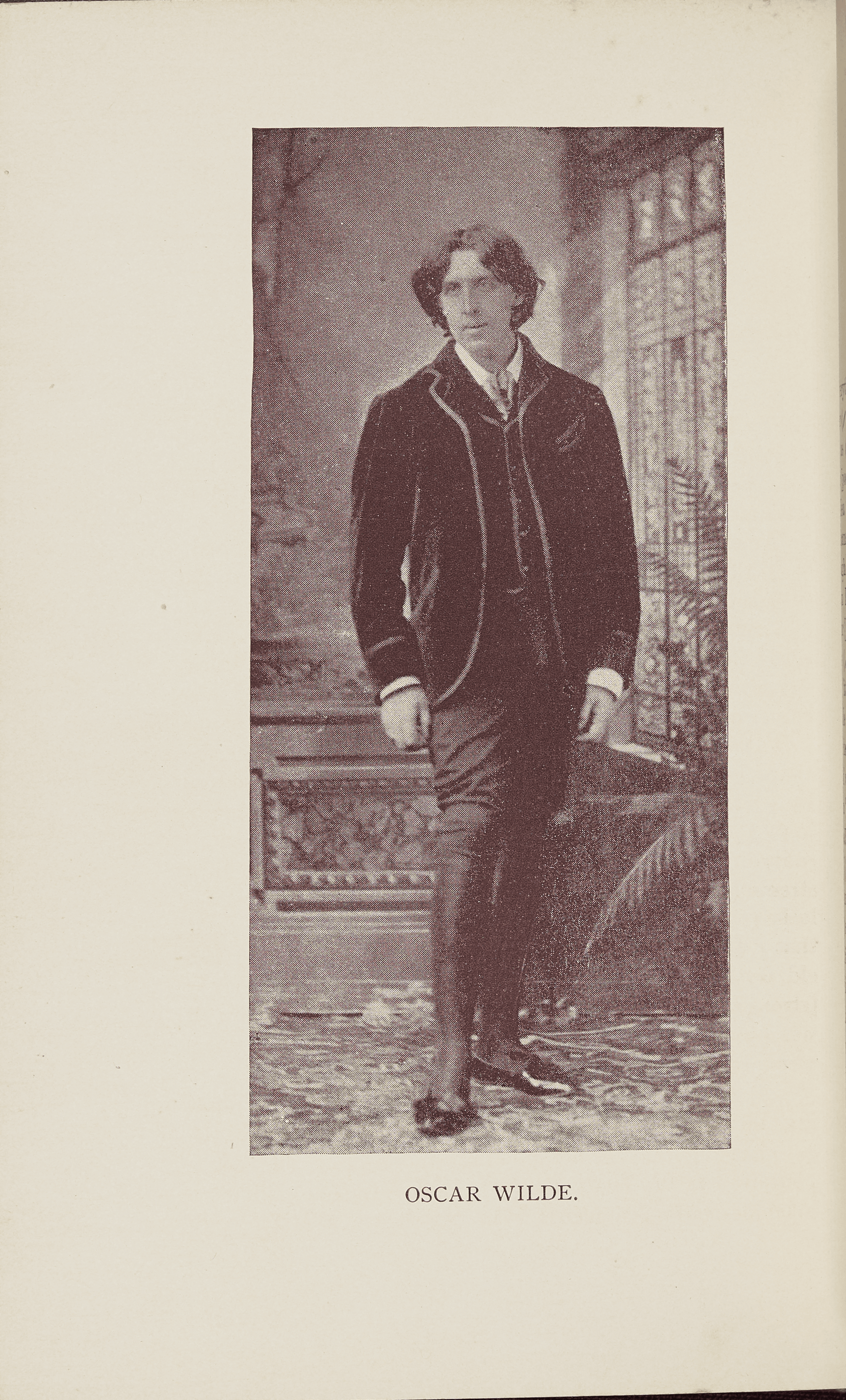
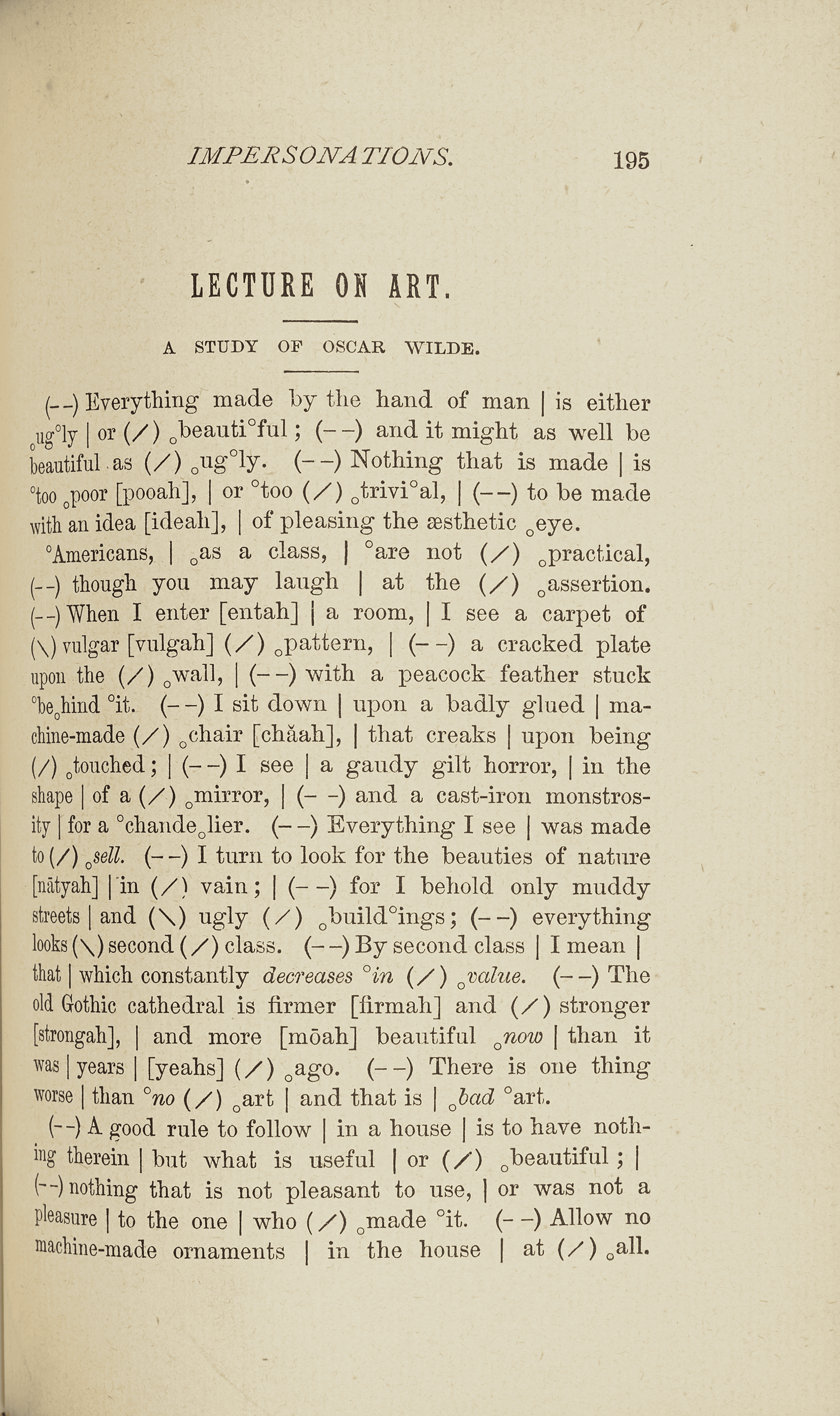
Helen Potter, Impersonations (1891)
American impressionist Helen Potter saw Wilde speak and recorded her impression of Wilde’s voice in print. | and || indicate pauses, while strokes and curves indicate changes of inflections. Wilde’s habit of pronouncing “enter” as “entah” and “firmer” as “firmah” obviously captured Potter’s imagination.
From the collection of Francis Spiteri Paris


Lippincott’s Monthly Magazine (July 1890)
Wilde’s only novel, The Picture of Dorian Gray, was first published in Lippincott’s. It depicts a beautiful young man who exchanges his soul for the everlasting good looks immortalized by his portrait. The story appalled conservative reviewers, with the Scots Reviewer deeming it suitable “for none but outlawed noblemen and perverted telegraph boys”. W.H. Smith’s, then Britain’s foremost lending library, banned this issue of Lippincott’s from their shelves.
Magdalen College Library, Magd.Wilde-O. (PIC) 1890
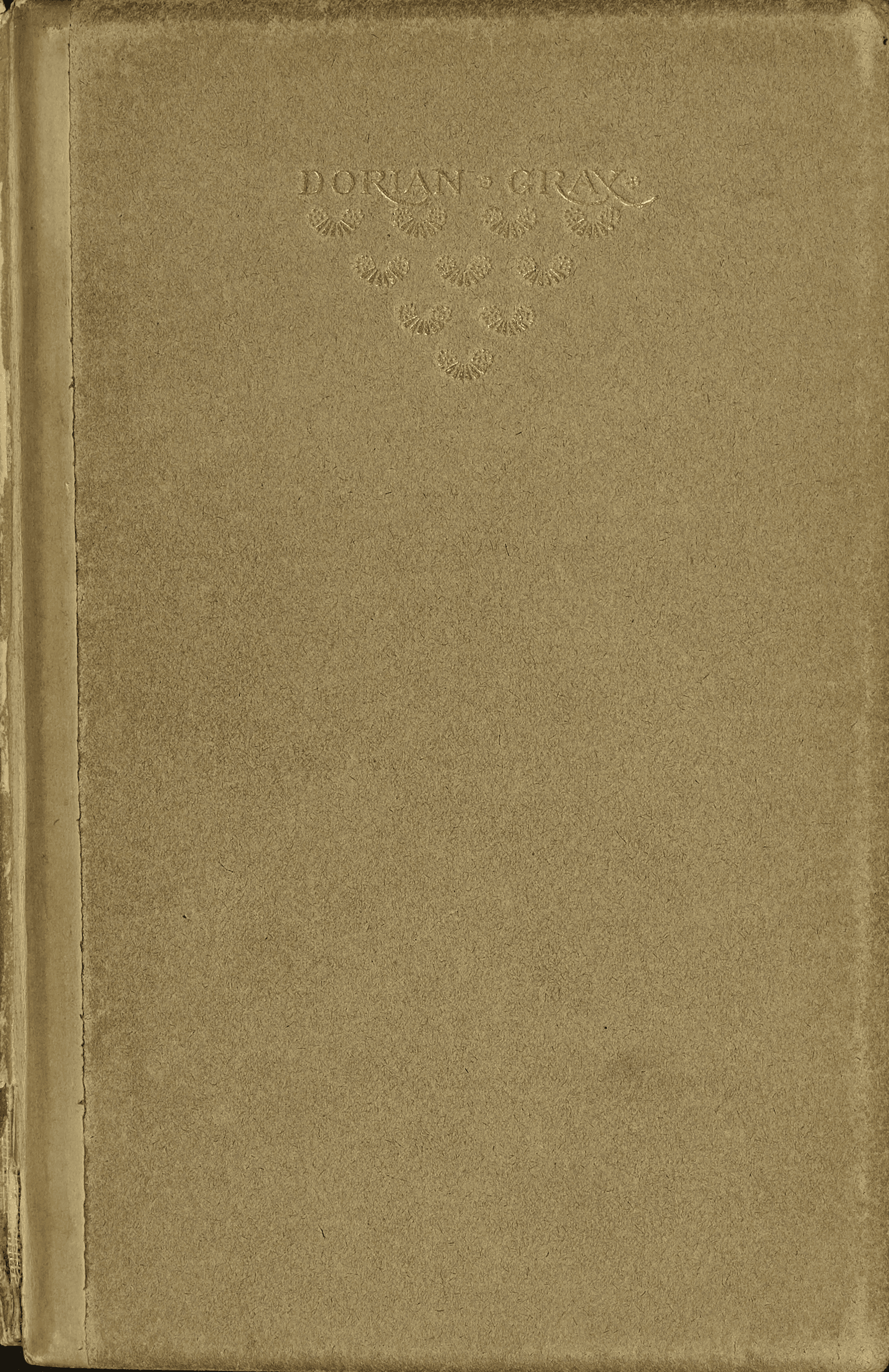
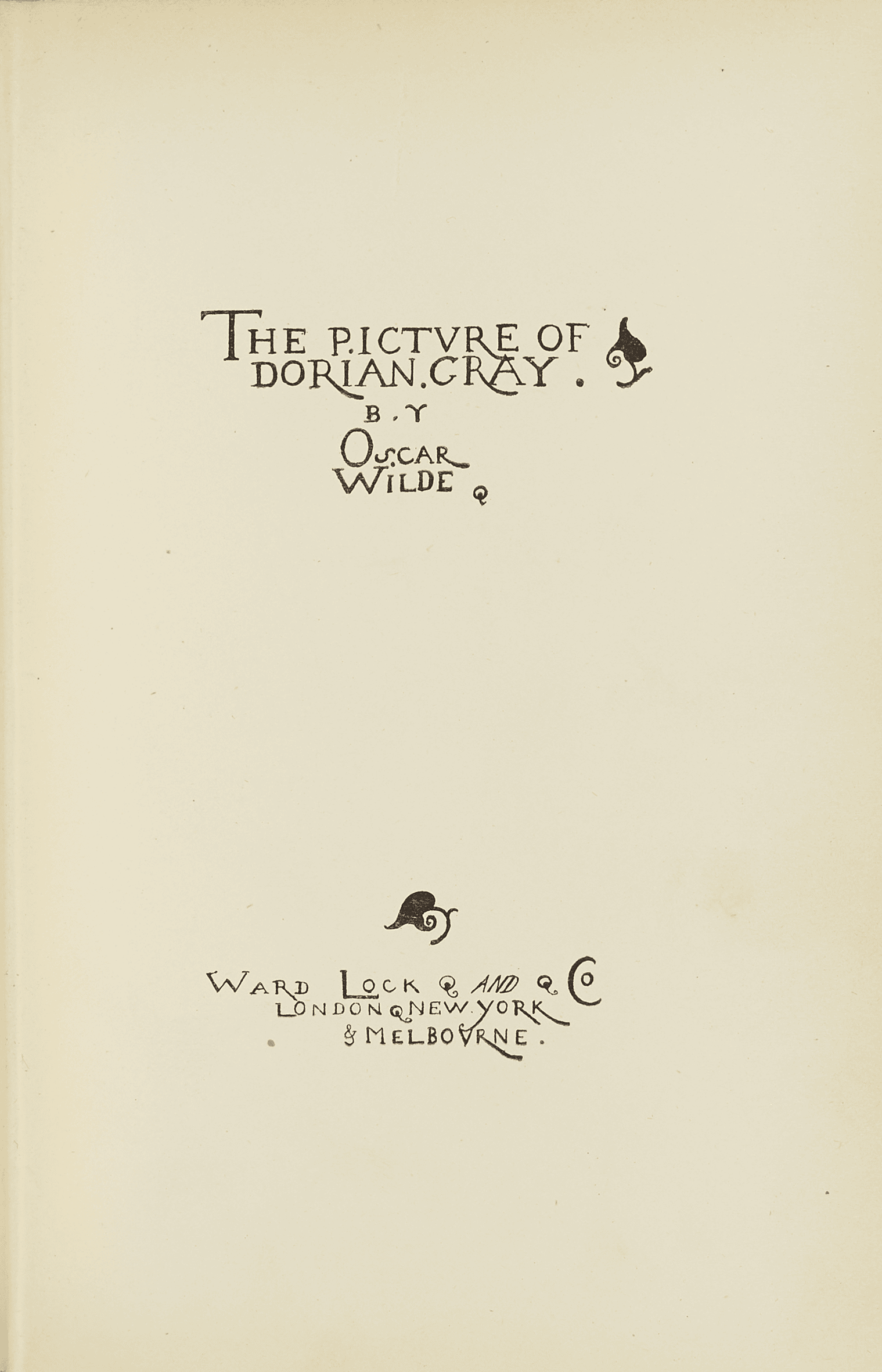
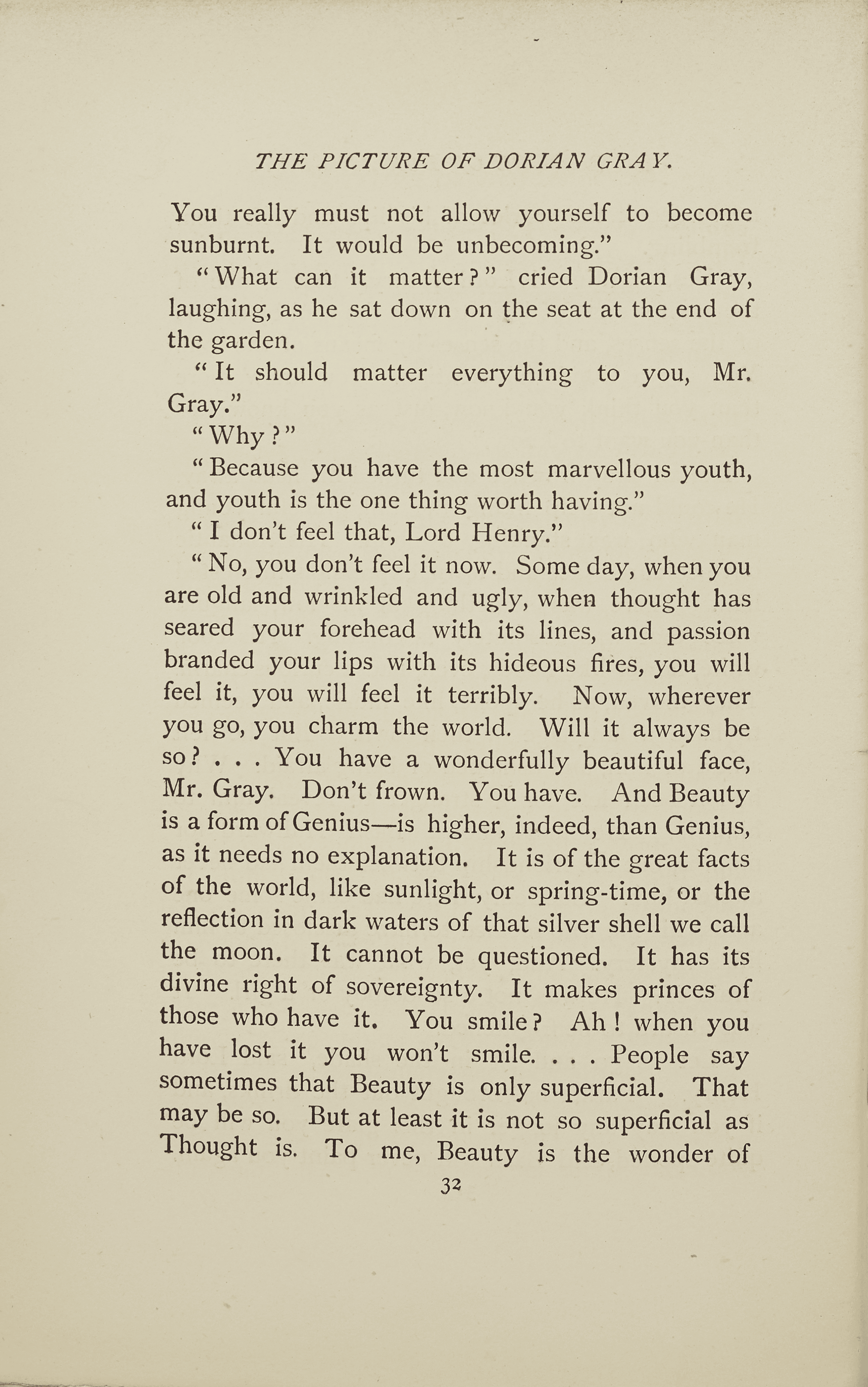

First Edition of The Picture of Dorian Gray (London: Ward, Lock & Co, 1891)
Wilde added 28,000 words to the magazine text to create the novella version of Dorian, moderating the artist Basil Hallward’s expressions of love for Dorian. Wilde’s copy-editor urged him to expunge Lord Henry Wotton’s assertion that “The only way to get rid of a temptation is to yield to it”. Wilde refused.
Magdalen College Library, Magd.Wilde-O. (PIC) 1891
The gift of Francis Lascelles-Hadwen, (Magdalen Demy 1947–50)
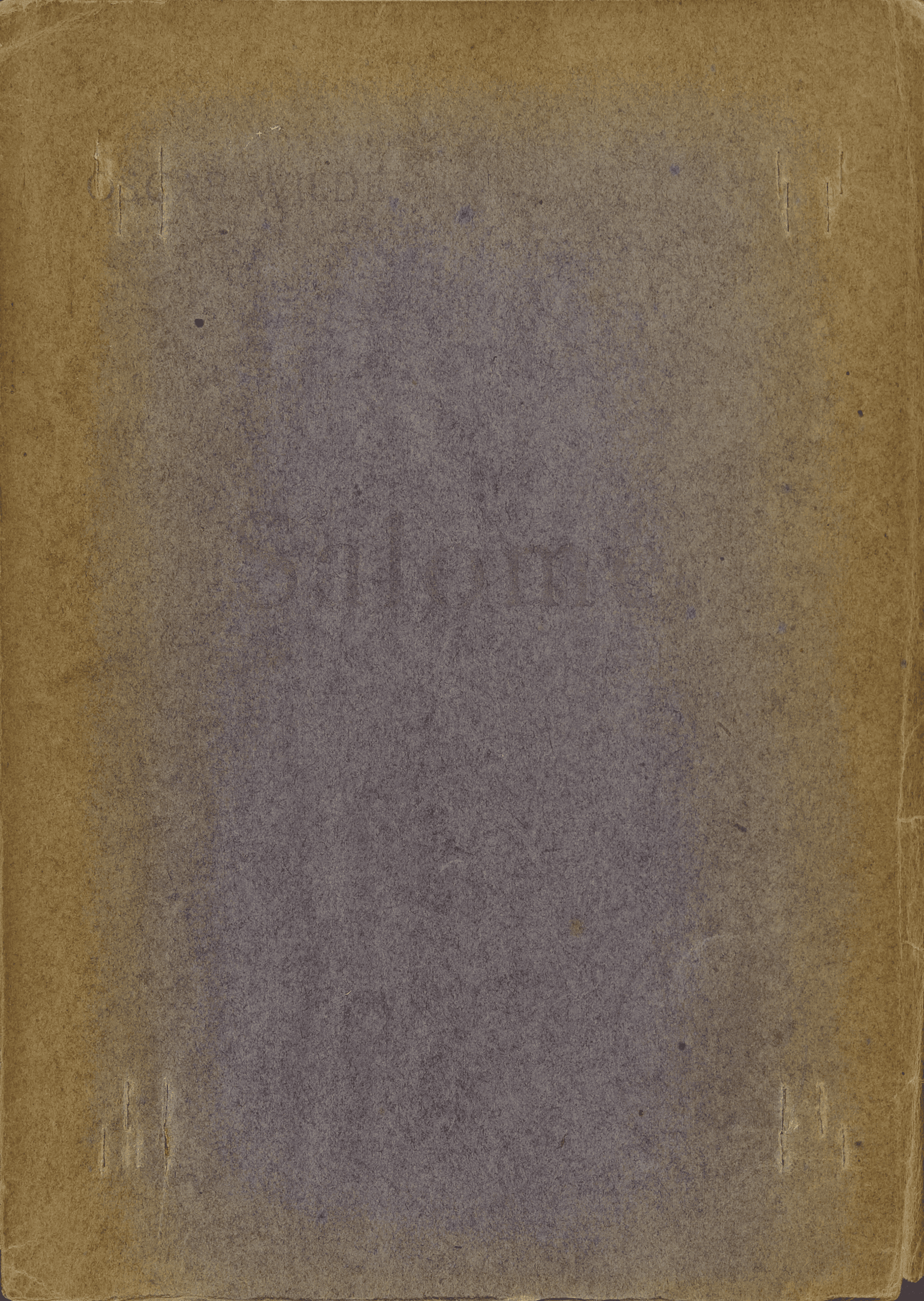
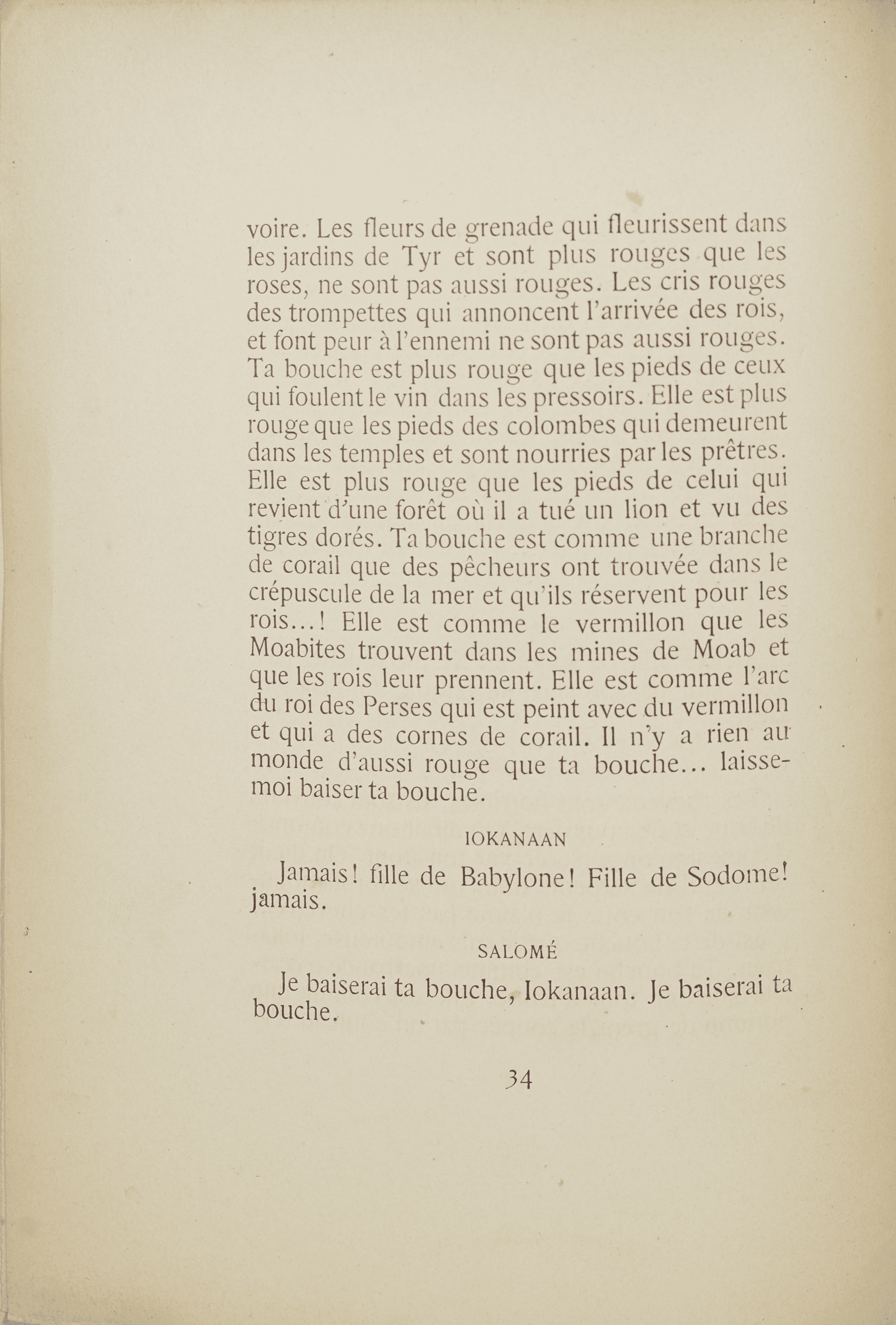

First Edition of Salomé (Paris: Librairie de l’art indépendant, 1892)
This edition of Salomé was bound in purple and silver. Wilde claimed that this was in tribute to Lord Alfred “Bosie” Douglas (1870–1945), by then his lover, writing to a friend “Bosie is very gilt-haired and I have bound Salome in purple to suit him”. As you can see, our copy has faded considerably over time. The play was refused a licence by the Lord Chamberlain’s Office and banned for its sensuality and depiction of Biblical figures.
Magdalen College Library, Magd.Wilde-O. (SAL) 1893a
Purchased through the generosity of Mrs Kay Wesley, in memory of her brother George Scott (Magdalen 1953–6)
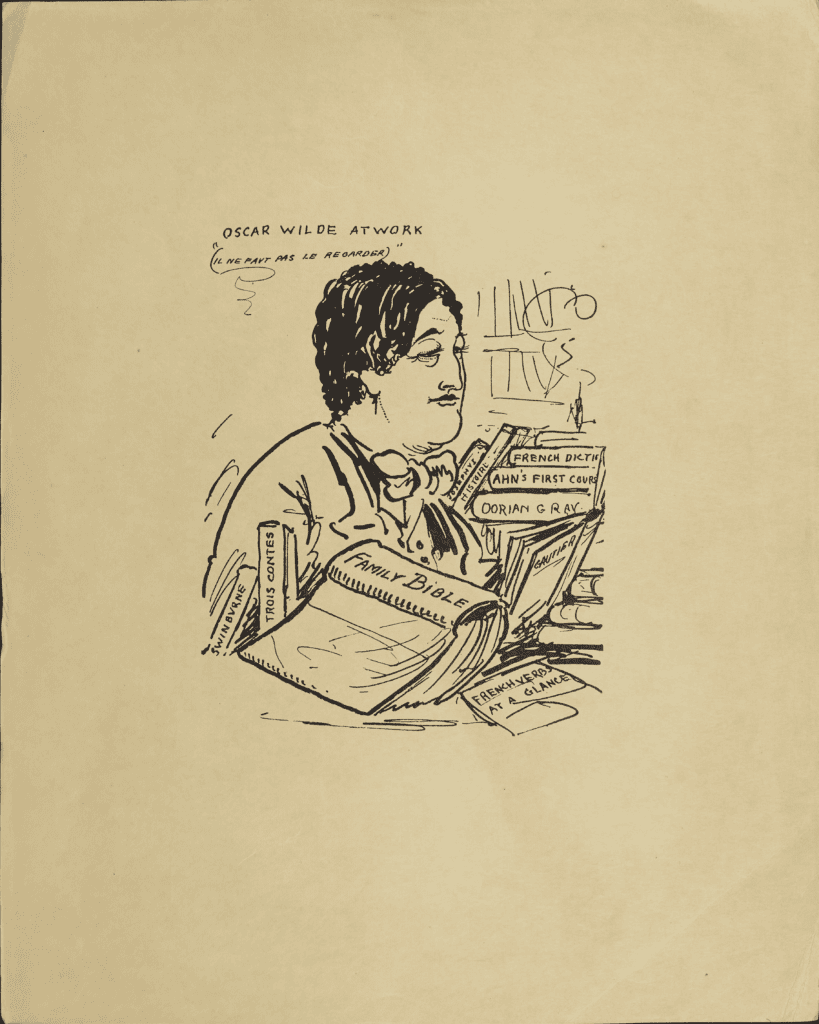

Caricature of Wilde by Aubrey Beardsley (1893)
This caricature by Beardsley shows Wilde writing Salomé, surrounded by his literary influences. Beardsley also mocks Wilde’s pretentious as a French-language writer by including French Verbs at a Glance, a French dictionary, and an 1851 textbook offering French for beginners.
Magdalen College Library, Vernier Box 3, Item 26
Purchased through the generosity of Justin Huscher (Rhodes Scholar 1978–80) and Hilarie Huscher
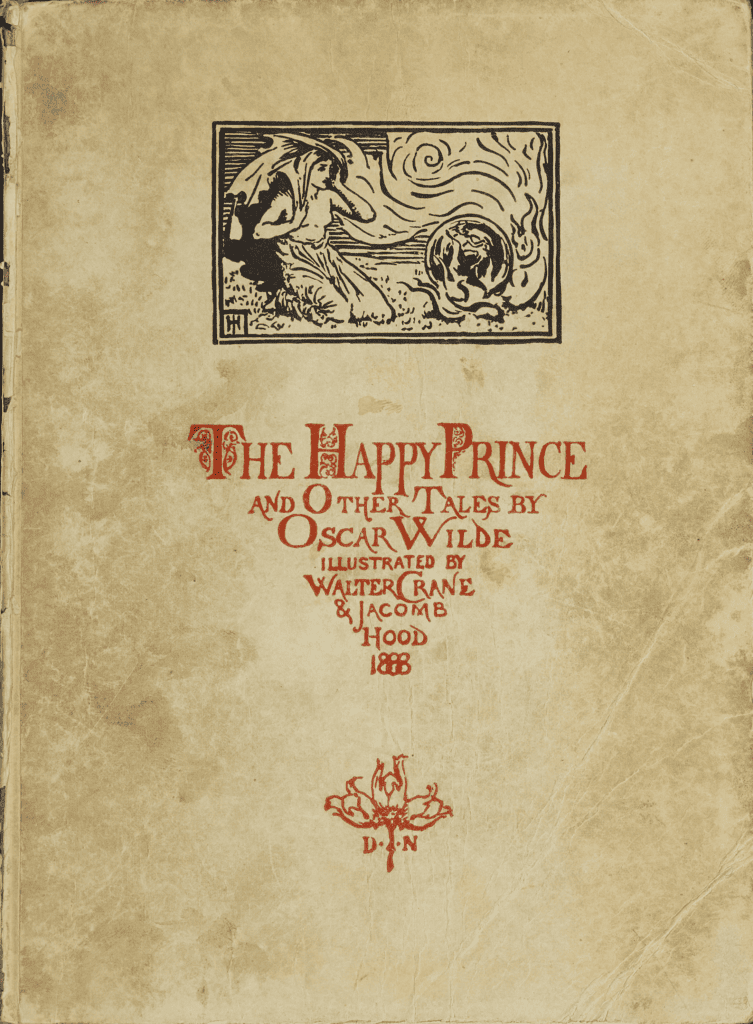

First Edition of The Happy Prince and Other Tales (London: David Nutt & Co., 1888)
Wilde’s first collection of fairy tales was issued in an edition of 1000 copies, on Japanese vellum over millboard. Wilde wrote that he intended these stories “partly for children, and partly for those who have kept the childlike faculties of wonder and joy, and who find in simplicity a subtle strangeness”.
Magdalen College Library, Magd.Wilde-O (HAP) 1888

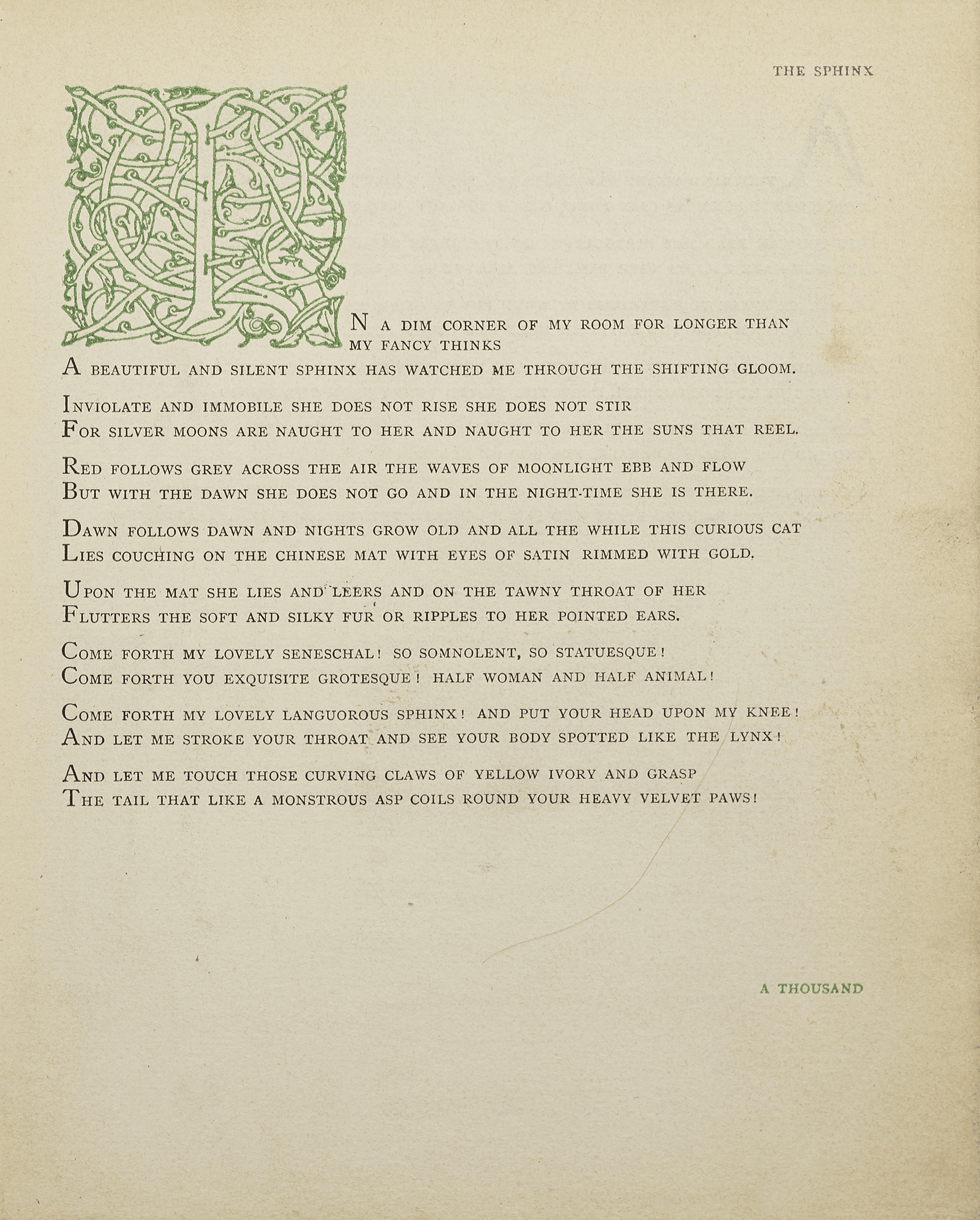
First Edition of The Sphinx (London: Elkin Matthews & John Lane, 1894)
Wilde may have begun writing The Sphinx while at Magdalen. The poem describes a student who keeps the sculpture of a sphinx in his room; through her, he imagines observing famous lovers such as Isis and Osiris, and Antony and Cleopatra. This sumptuous first English edition, limited to 200 copies on handmade paper, included designs by Charles Ricketts (1866–1931), who beautifully captures the poem’s atmosphere.
Magdalen College Library, Magd.Wilde-O. (SPH) 1894
Purchased through the generosity of Justin Huscher (Rhodes Scholar 1978–80) and Hilarie Huscher
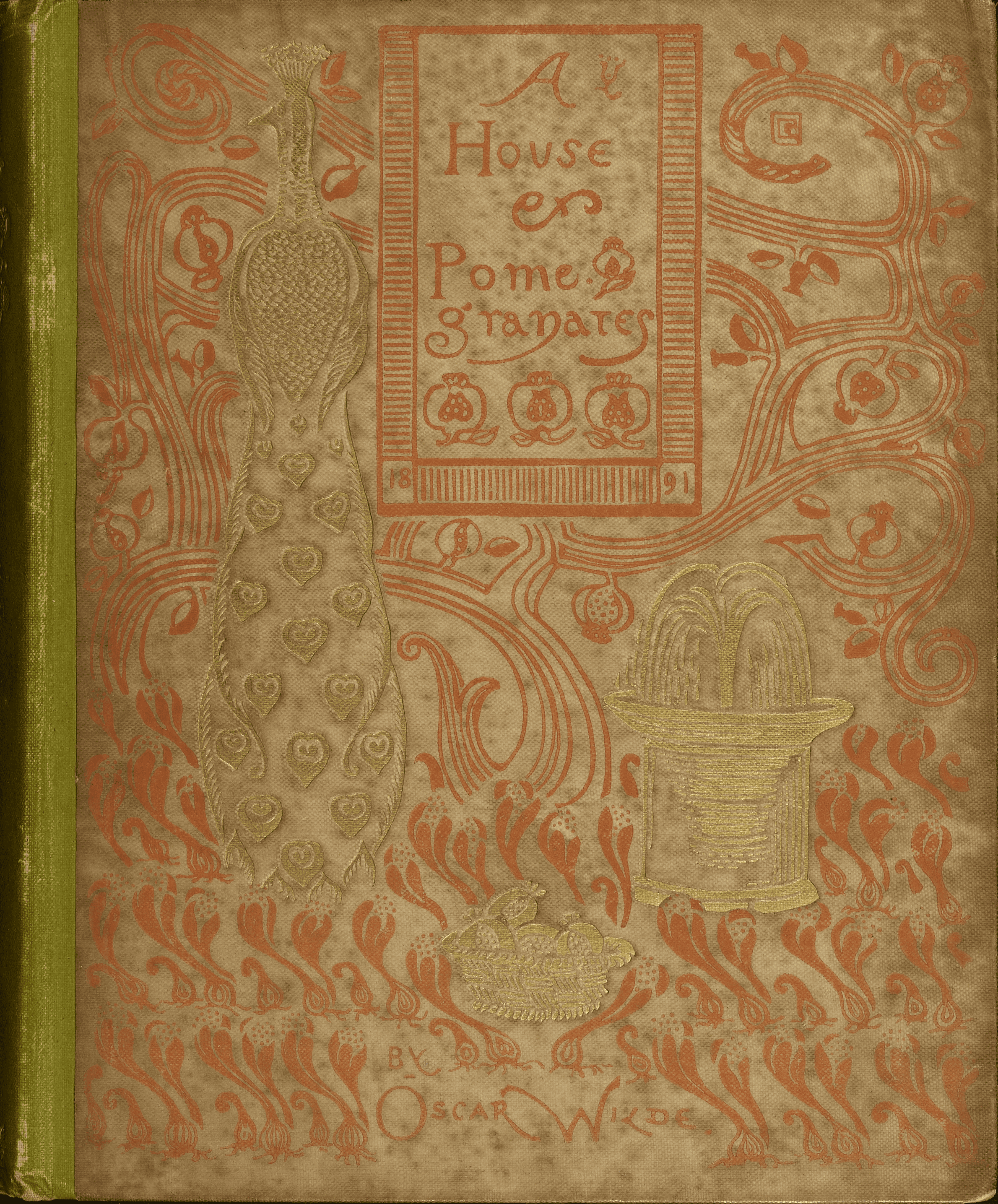


First Edition of A House of Pomegranates (London: James R. Osgood Mulvaine & Co., 1891)
Wilde’s second collection of tales, richly-illustrated and dedicated to Wilde’s wife, the Anglo-Irish writer Constance Lloyd (1858–98). Charles Ricketts and his partner, artist Charles Shannon (1863–1937), collaborated in the book’s design and illustration. Ricketts and Shannon remained Wilde’s lifelong friends.
Magdalen College Library, Magd.Wilde-O. (HOU) 1891

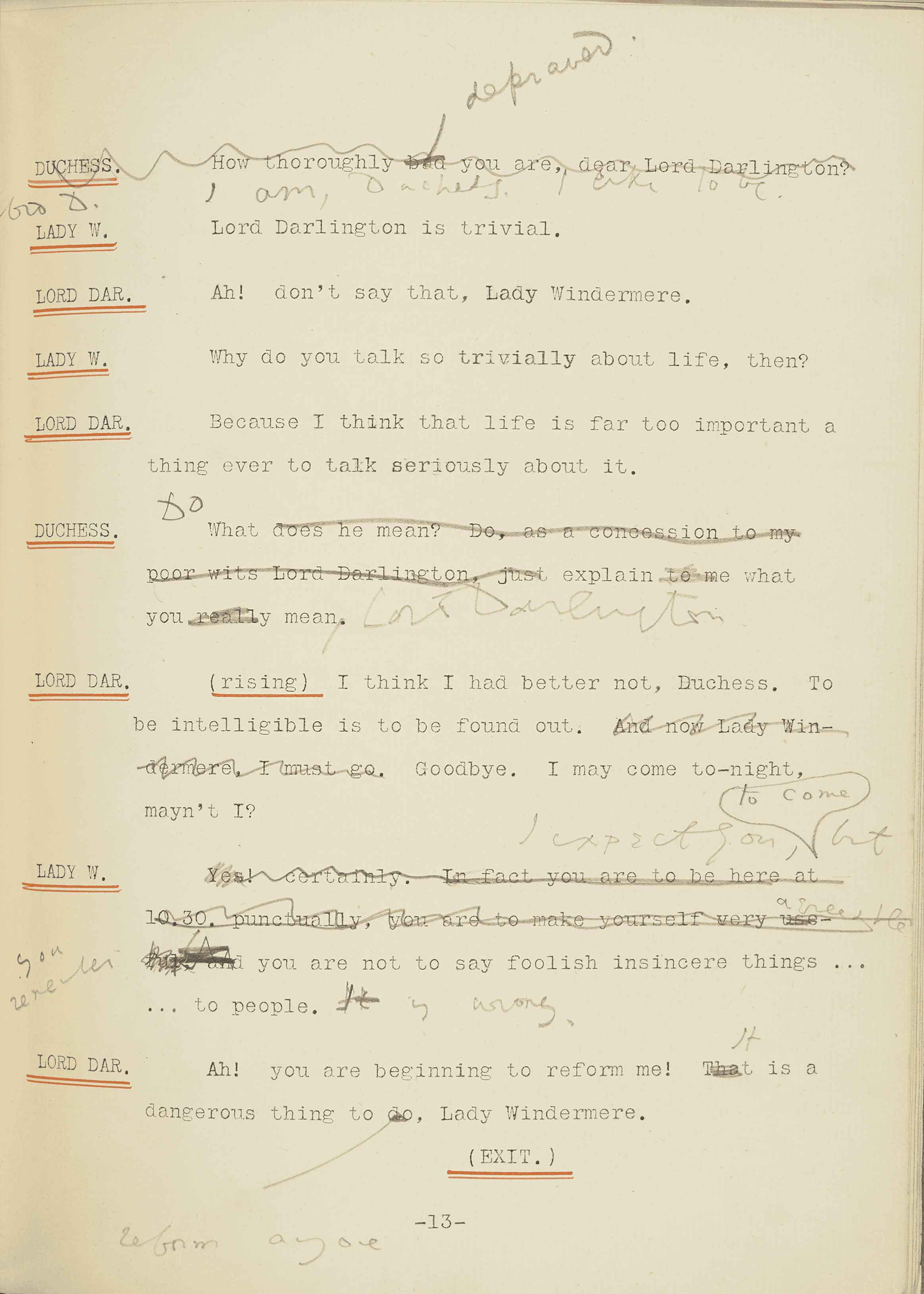

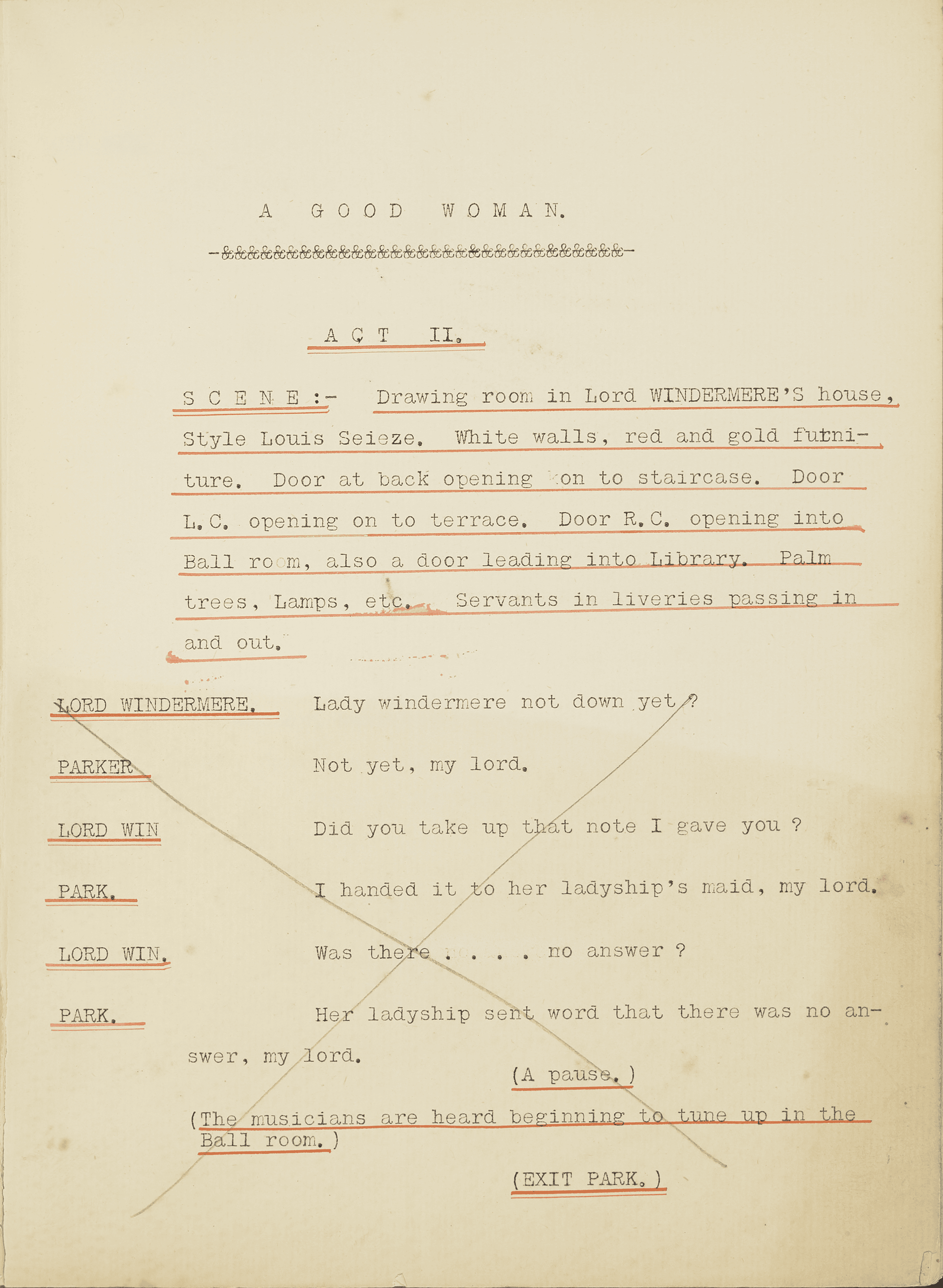
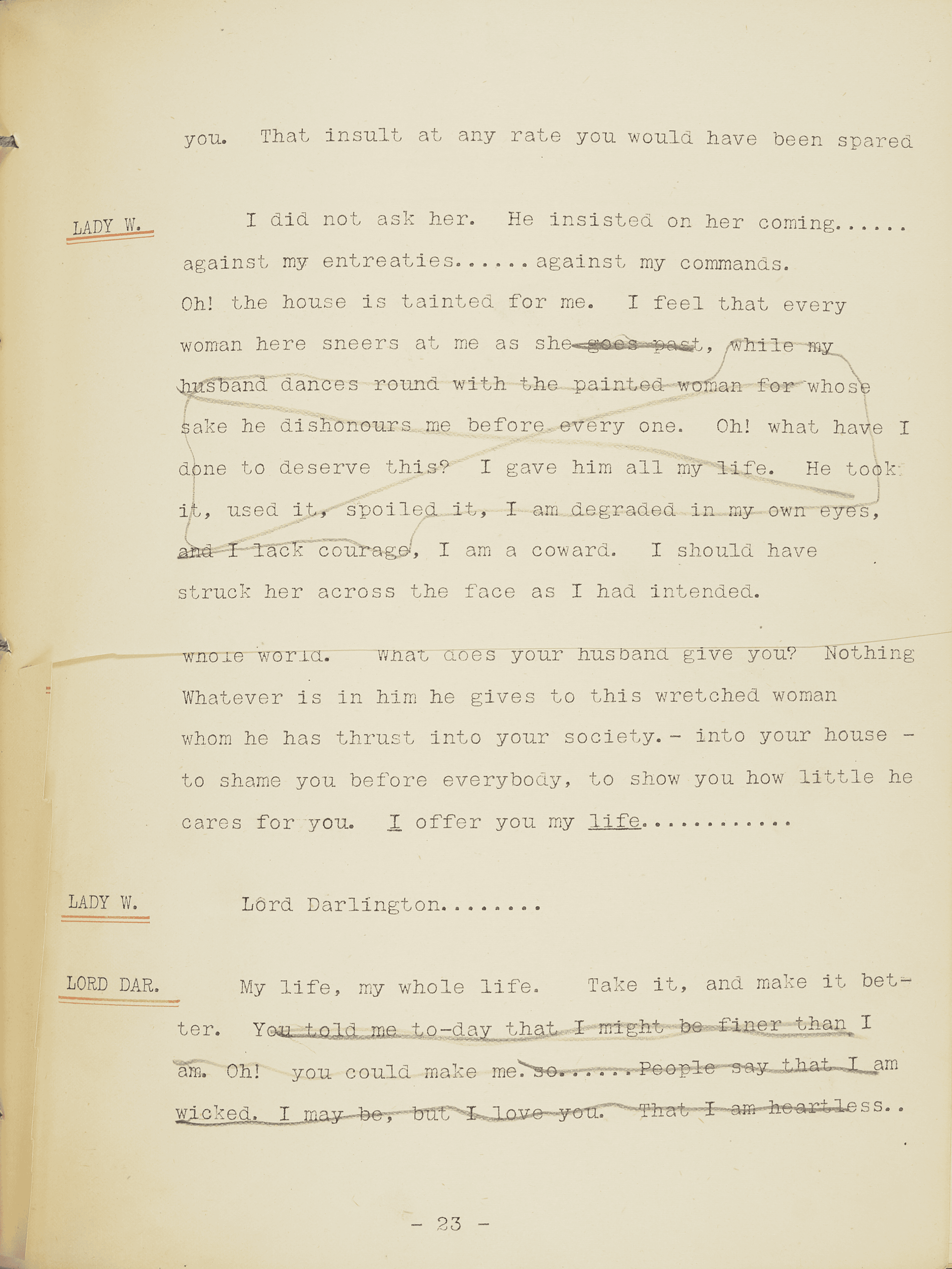
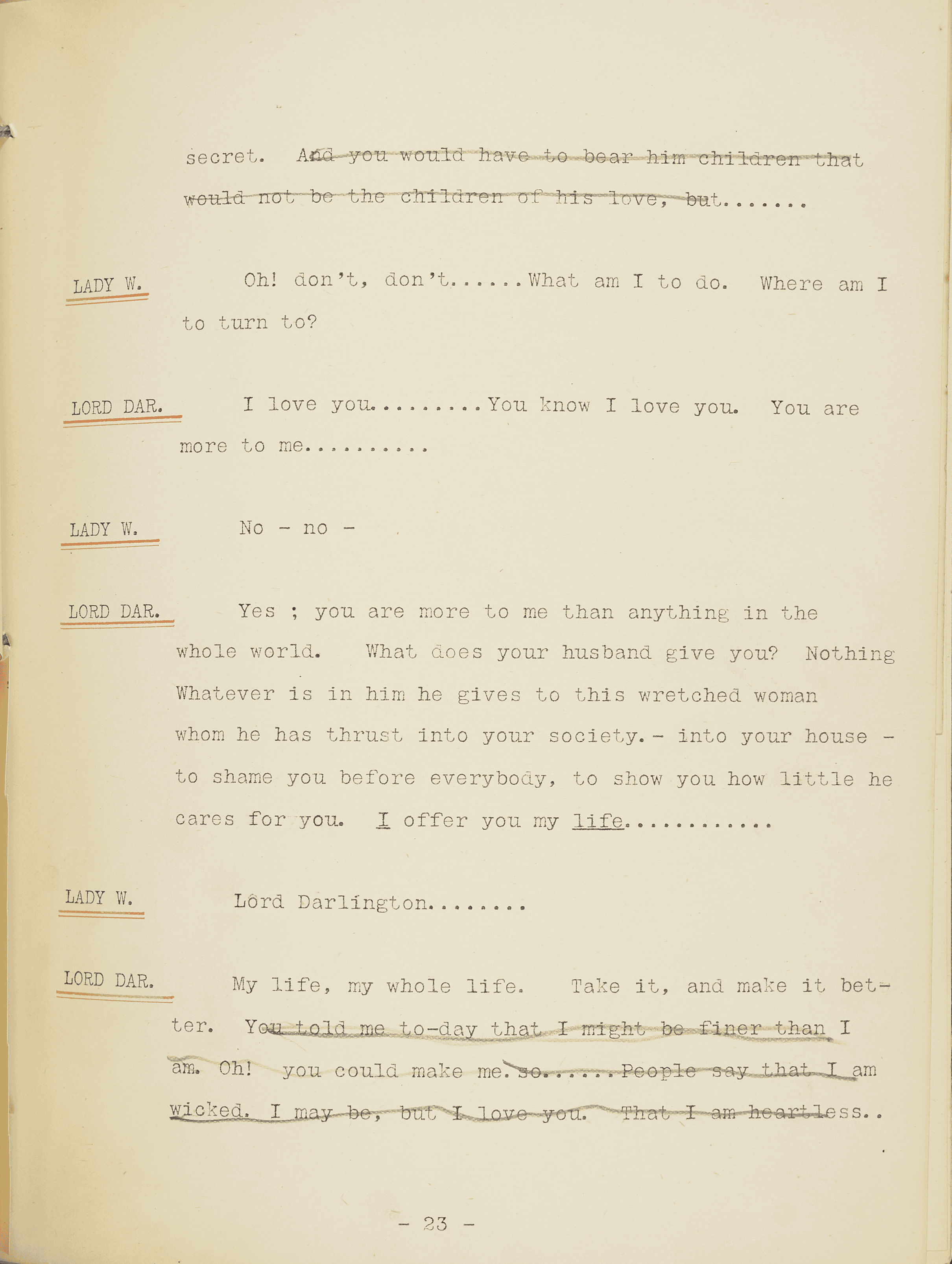
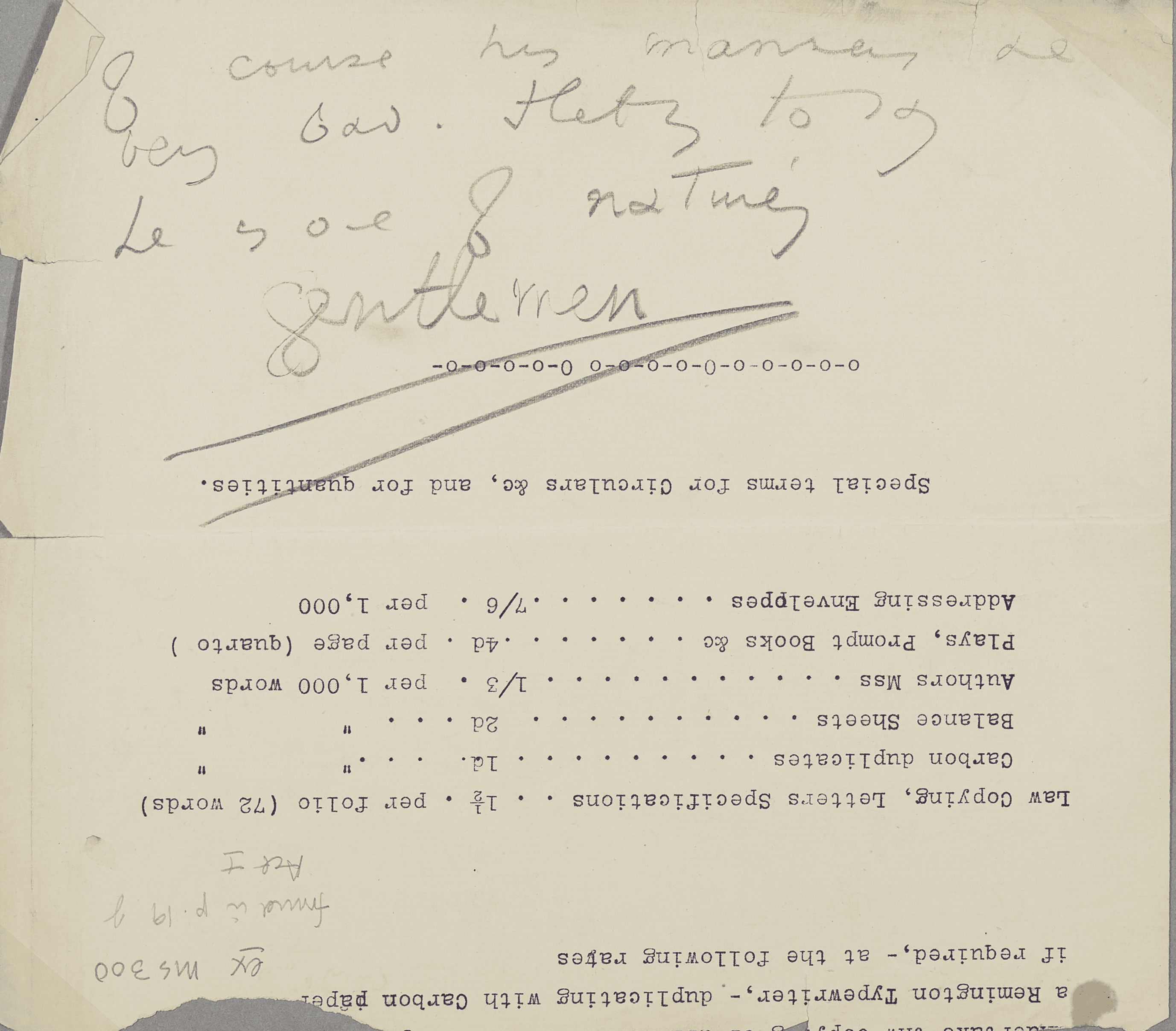
Draft of A Good Woman, Later Lady Windermere’s Fan (1892)
This typescript, with handwritten corrections by Wilde, is an early draft of Acts 1 and 2 of the play which became Lady Windermere’s Fan. While revising the draft, Wilde decided to introduce the character Hopper, the rich young Australian intended by the Duchess of Berwick to marry her near-silent daughter Agatha: the speech is written in manuscript on the torn fragment of the typists’ circular.
Magdalen College Archives, MS 300
Bequeathed by E. H. W. Meyerstein (Magdalen Demy 1908–12)
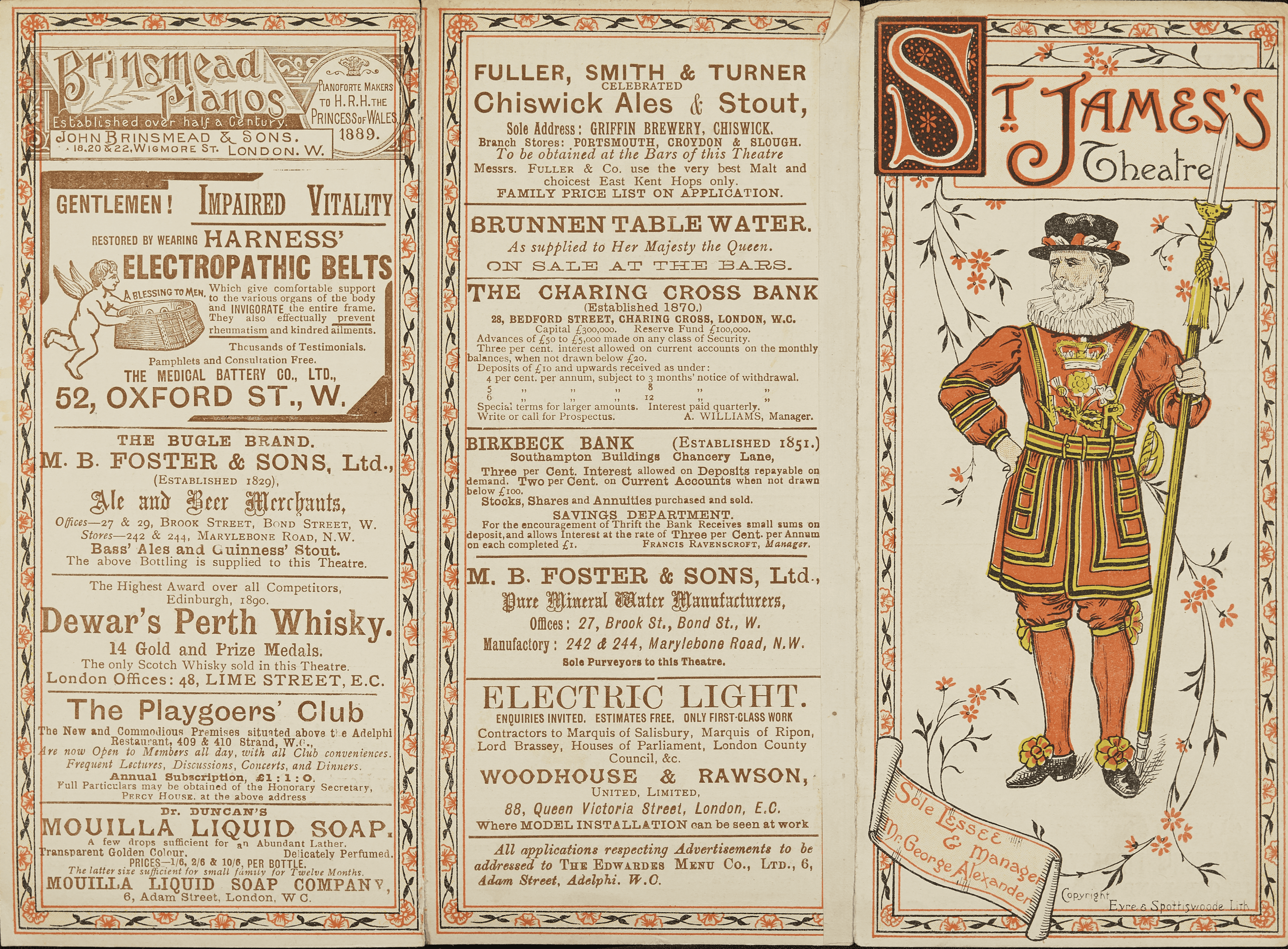
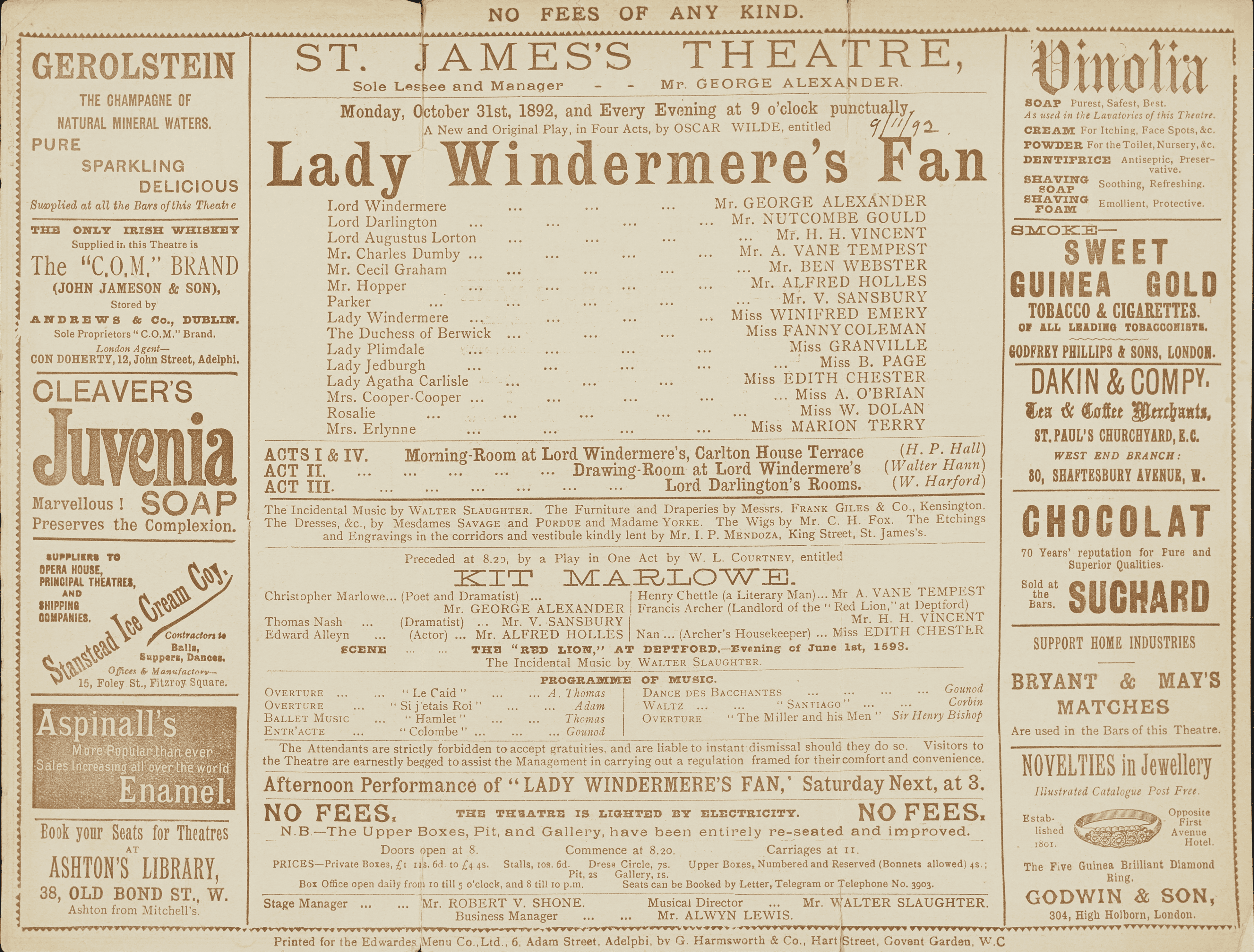
Theatre Programme for Lady Windermere’s Fan (1892)
Lady Windermere’s Fan opened on 22 February 1892 at London’s fashionable St James’s Theatre. Wilde delighted and appalled the first night crowd by appearing before the curtain, smoking a cigarette and wearing a green carnation, to address his audience. The play was a huge success: by 1893, Wilde had made over £7,000 from it.
From the collection of Francis Spiteri Paris
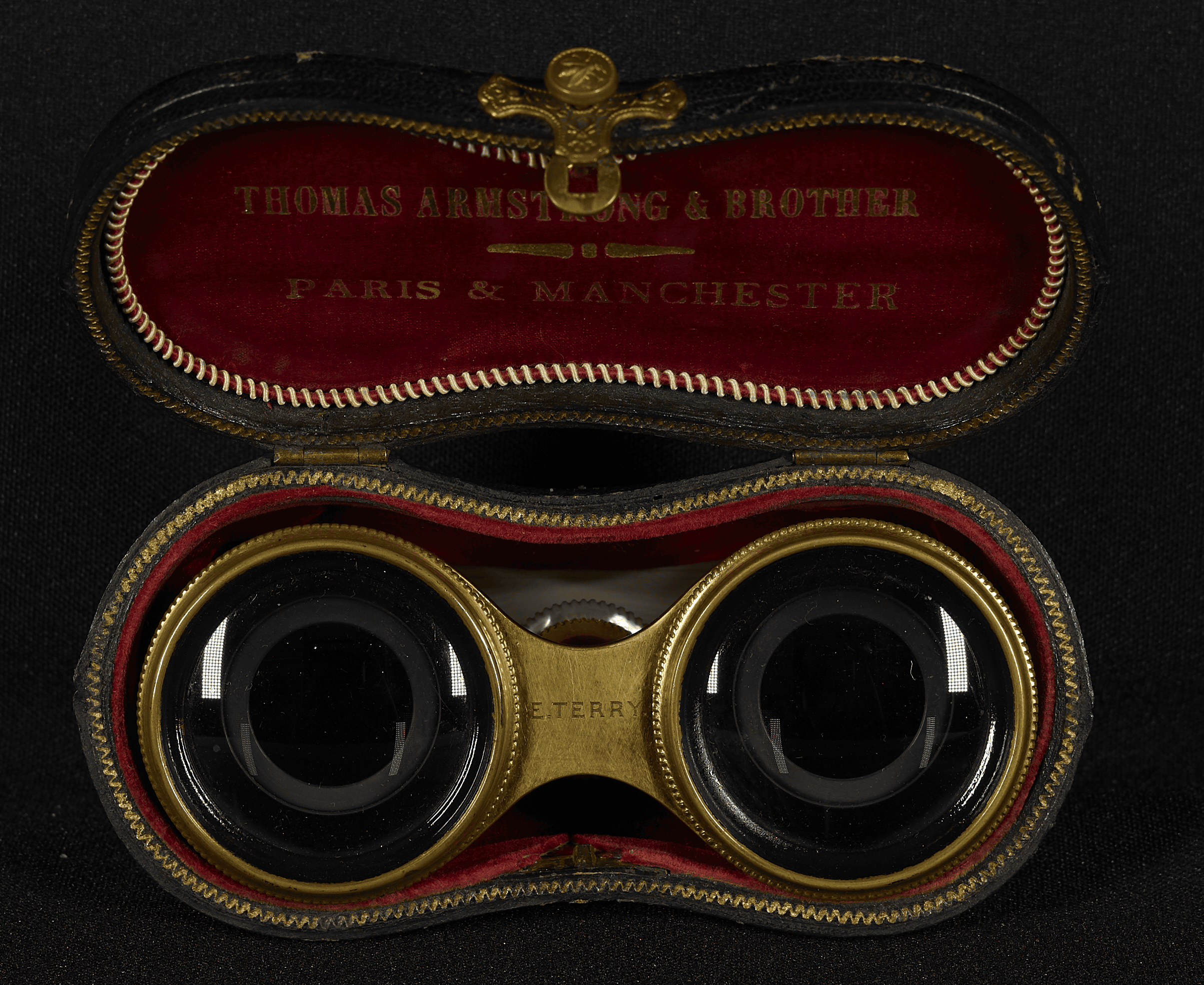
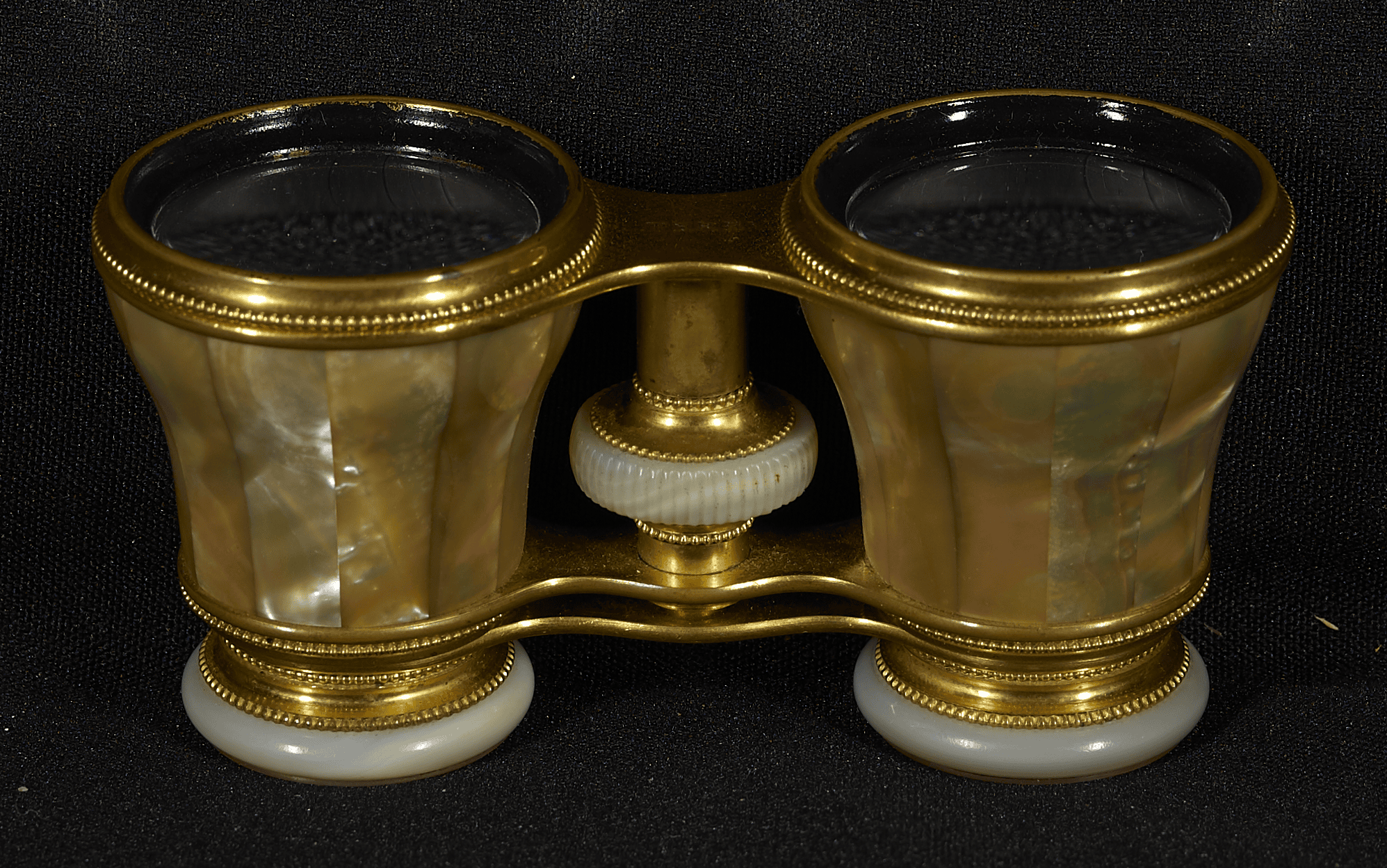
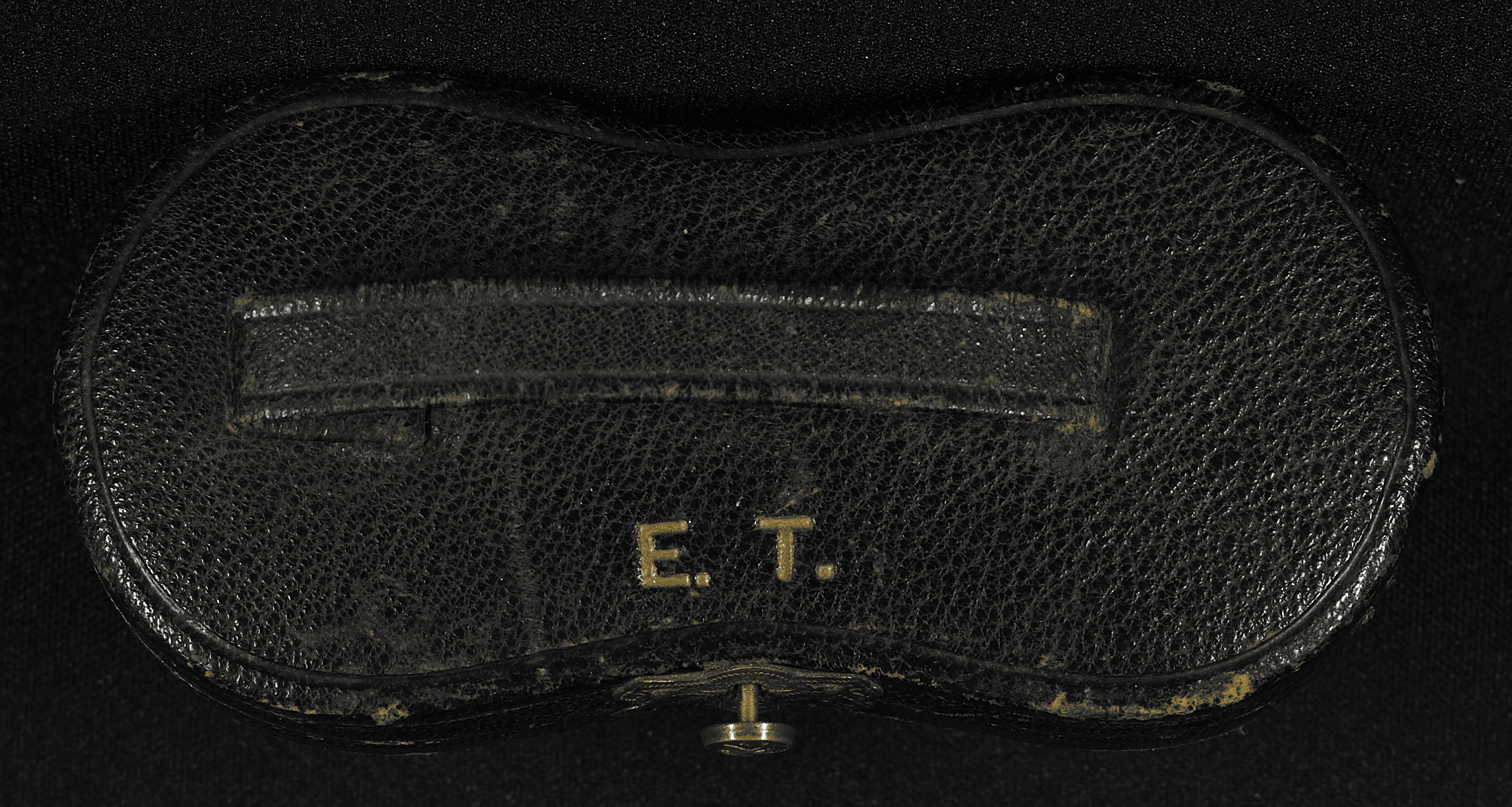
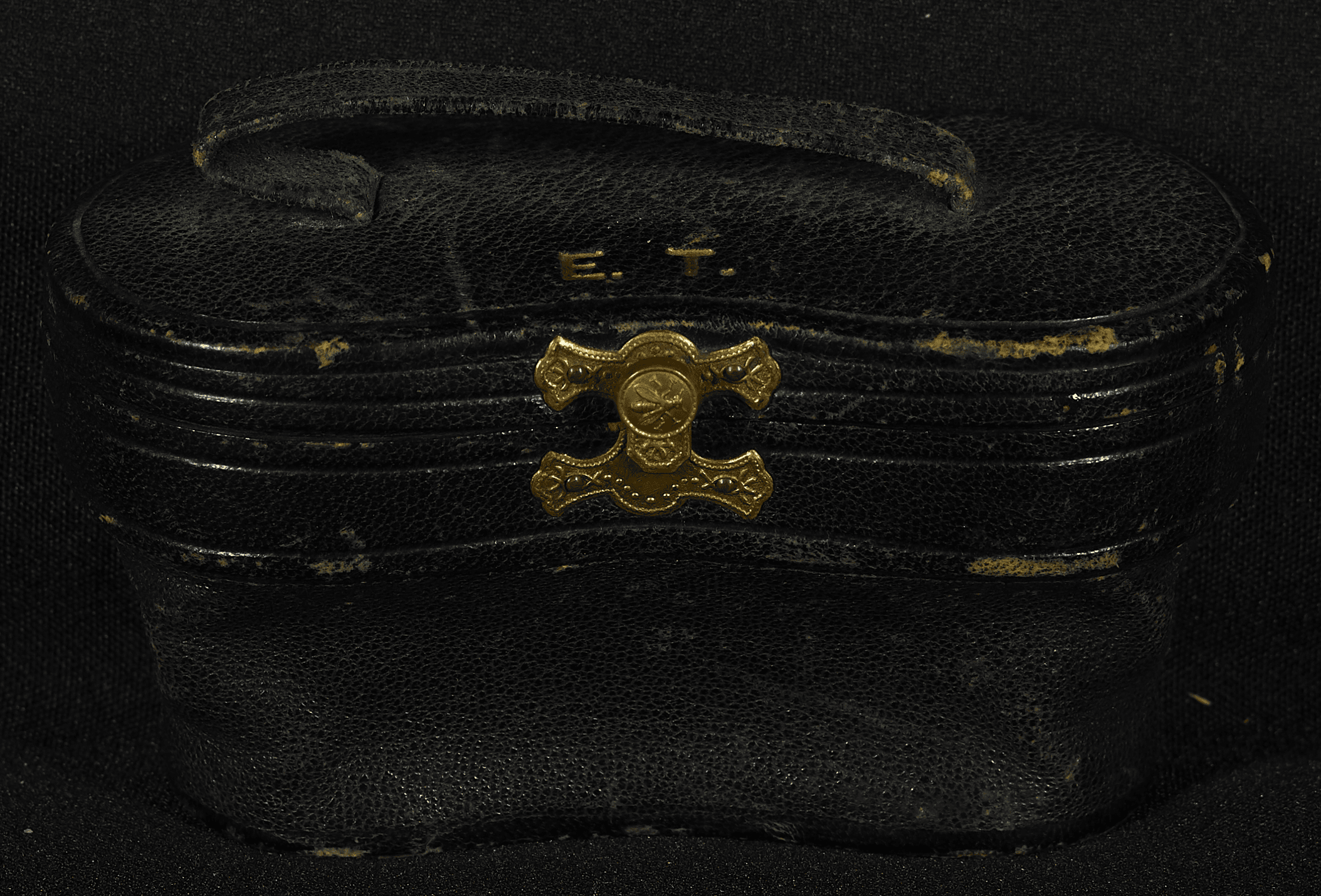
Ellen Terry’s Opera Glasses
Oscar Wilde dedicated his first ever play, The Duchess of Padua, to Ellen Terry (1847–1928), Victorian England’s leading Shakespearean actress. He also wrote poems to her in the roles of Portia and Henrietta Maria.
From the collection of Julia Rosenthal


Letter from Wilde to the Pall Mall Gazette (2 November 1894)
In 1894, Wilde and Alfred Douglas were the subject of a novel entitled The Green Carnation, published anonymously but written by Robert Hichens, who knew Douglas. Rumours – repeated by the PMG – implied that Wilde was the novel’s author. He wrote to the PMG to deny it: “I invented that magnificent flower. But with the middle-class and mediocre book that usurps its strangely beautiful name I have, I need hardly say, nothing whatsoever to do.”
From the collection of Francis Spiteri Paris


First Edition of Lady Windermere’s Fan (London: Elkin Matthews & John Lane, 1893)
Wilde presented this copy of Lady Windermere’s Fan to his close friend Arthur Clifton. Clifton was a solicitor who subsequently became a successful art dealer with Wilde’s devoted friend and executor, Robbie Ross. Clifton would also share with Constance the guardianship of the Wilde’s two sons.
From the collection of Francis Spiteri Paris